
Table of Contents
- 1 When is the best time to visit Ireland: Intro
- 2 What’s the weather like in Ireland?
- 3 Ireland Seasons
- 4 Ireland Tourist Seasons
- 5 When is the best time to visit Ireland?
- 6 What to expect in Ireland weatherwise
- 7 Best time to visit Ireland according to activity
- 8 Ireland weather by month: Overview
- 9 Ireland in January
- 10 Ireland in February
- 11 Ireland in March
- 12 Ireland in April
- 13 Ireland in May
- 14 Ireland in June
- 15 Ireland in July
- 16 Ireland in August
- 17 Ireland in September
- 18 Ireland in October
- 19 Ireland in November
- 20 Ireland in December
When is the best time to visit Ireland: Intro
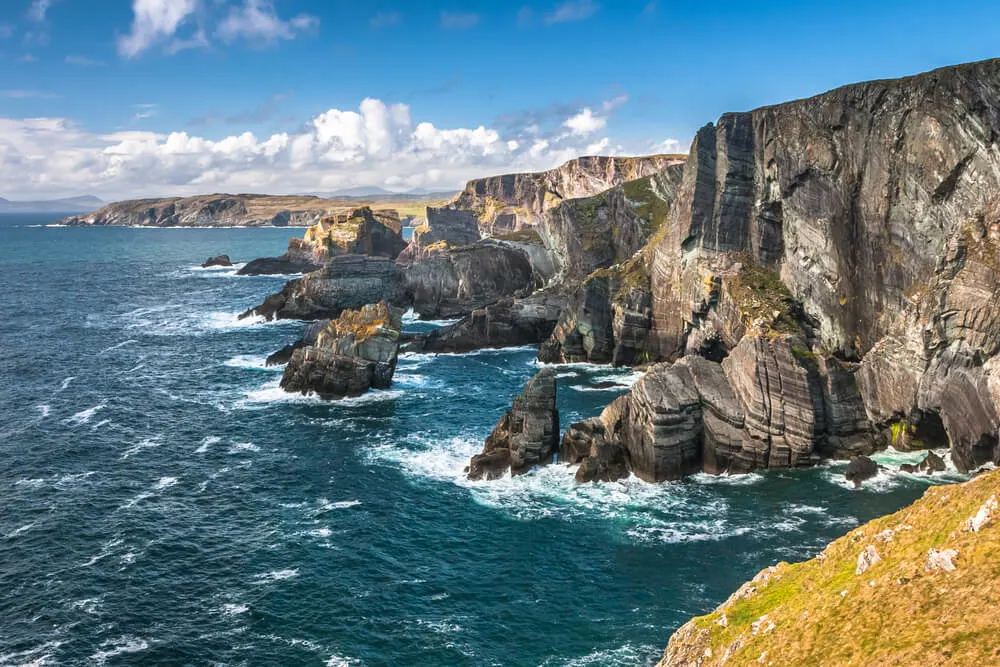
May is probably overall the best month to travel to Ireland with good possibilities of settled weather, plenty of daylight and limited numbers of tourists.
April, May, September and October are the best times to visit Ireland for weather, sightseeing and to avoid the peak tourist season.
June, July and August are the best times to visit Ireland for road trips, camping and hiking or for other activities that require decent weather and lots of daylight.
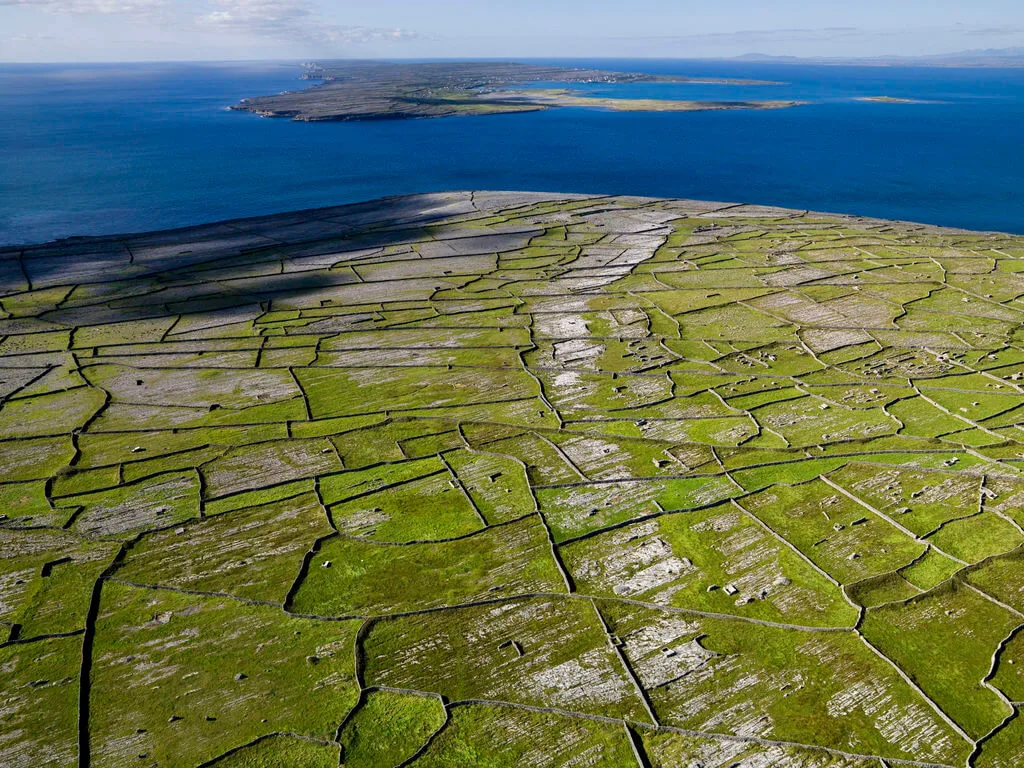
January and February are the best times to visit Ireland on a budget and if you want to increase the likelihood of (maybe) seeing snow. No guarantees on this one!
June, July, August are the best times to visit Ireland for music festivals. April, May, September and October is a good time to visit for food festivals (although some also take place during the summer months as well) and March 17th (St. Patrick’s Day Festival) is the best time to experience all things green.
December has a festive atmosphere with plenty of events, Christmas markets and decorations to brighten up the days leading up to Christmas and New Year celebrations.
When to travel to Ireland: A quick overview
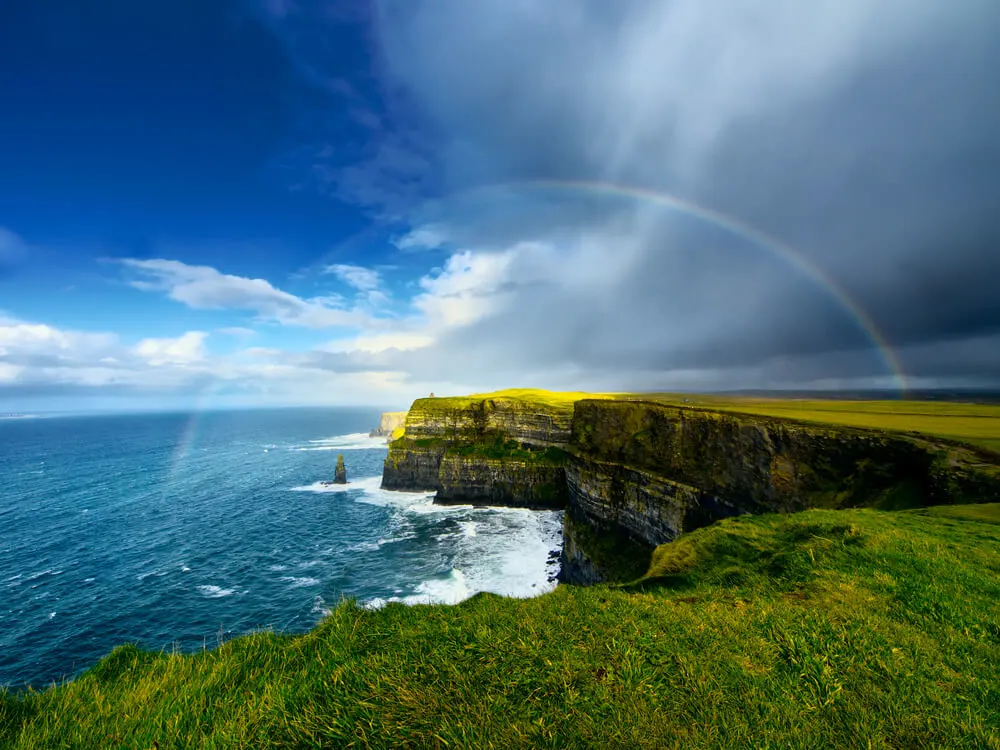
The best time to go to Ireland largely depends on what you want to see and do on your trip. The impact of the weather on your city break with lots of indoor attractions will be different to a trip where you plan to be outdoors for most of your stay.
Perhaps you have the flexibility to select a time of the year to travel to Ireland that is most suitable for your itinerary. Or there may be certain events that you want to attend such as a music festival or arts festival, which restrict your travel dates.
Your travel budget is of course another factor to keep in mind. Visiting Ireland during popular holiday periods can increase the overall cost of your vacation due to higher air travel fares and accommodation prices.
Keep an eye out for higher prices around the run up to Christmas or New Year or over a bank holiday (a public holiday that falls on a Monday for an extended weekend), and during peak tourist season (June to August).
This guide will give you useful insights into the weather in Ireland, as well as great travel tips as to what is on when and even some travel ideas.
What’s the weather like in Ireland?
The climate of the island of Ireland is heavily influenced by the Atlantic Ocean. This has a moderating effect and means that Ireland and Northern Ireland (generally) escape the extreme high and low temperatures frequently felt on the continent of Europe and at the same latitudes in the United States, for example.
Generally speaking, Irish summers are mild. The average temperature in Ireland during the summer months is approximately 18-20°C (64-68 °F) (This is the mean max temperature summer).
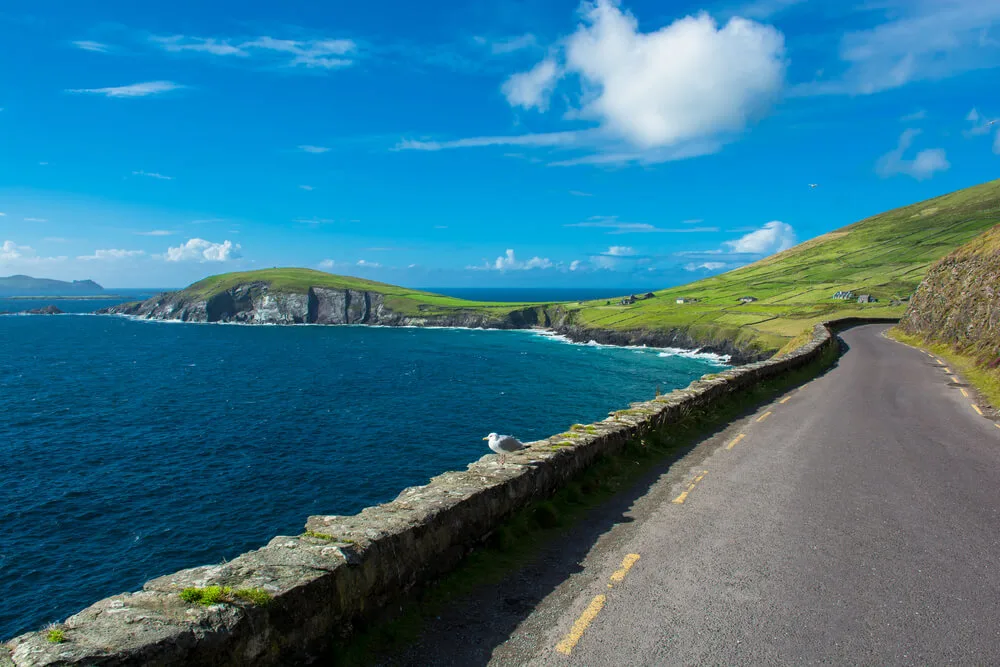
Winters tend to be cool and windy. Areas near the coast experience milder winters, sometimes temperatures are even a few degrees warmer than those further inland due to the knock-on effects of the warm Gulf Stream current in the Atlantic Ocean. This ensures that the waters around Ireland’s most northerly point, Malin Head, remain ice-free in winter.
There is a very good chance of rain all year round in Ireland, so I would never recommend traveling to Ireland without a good rain jacket. Spring and summer tend to be on average drier than other months, but this differs from year to year. The months from April through to July have on average about 80 mm (about 3 inches) of precipitation per month.
Precipitation varies quite a lot across the island. The west of the island receives more precipitation than the east, with the average rainfall over all of Ireland being roughly 1230 mm (48 inches) per year.
Snowfall in Ireland is not particularly common, especially on lower lying land. Usually, snowfall only lasts for a short while on the ground and is most likely to occur during the months of January and February. A white Christmas in Ireland in December is definitely not typical, but also not unheard of!
If there is heavy snowfall, you can expect that there will be major disruptions to traffic. Yes, we have experienced Dublin Airport being closed due to snowfall in the past. An American passenger behind me in the ticket queue could not believe that the airport would close due to a few centimeters of snow.
As a country, we are much better equipped to deal with rain than snow!
Ireland Seasons
While the seasons of the year in Ireland are distinct, each with their own share of flare, they are not as pronounced as in other regions of the world. Even the coldest months of winter (temperatures of about 2-7 °C or 35-44 °F) can be considered mild due to the Irish temperate maritime climate.
Most years, there is no abrupt change in the weather or average temperature between the seasons in Ireland. Occasionally reversals do occur with a surprise few days of summer weather appearing out of the blue in early fall.
The meteorological seasons are defined based on the annual temperature cycle (unlike the astronomical seasons which are based on the earth’s position in relation to the sun). According to the average Irish air temperatures, there are four clear seasons, each consisting of three months of the calendar.
Like many other countries at similar latitudes, Ireland classifies spring starts in March through to May, summer as being from June through to August, fall or autumn as being from September to November and winter as being from December through to February.
When is spring in Ireland?
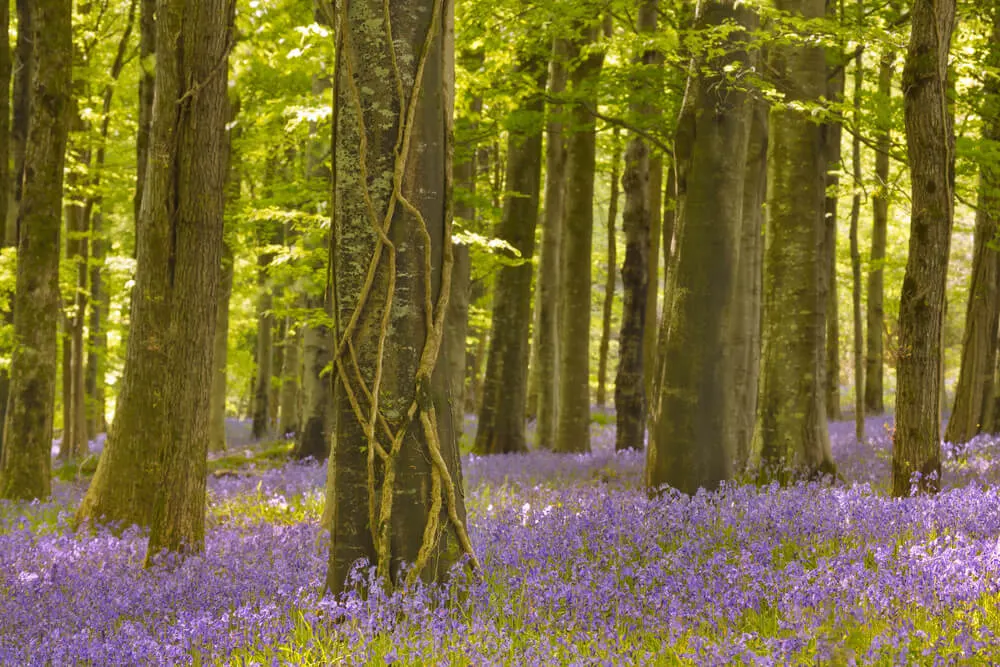
Officially, spring starts in March in Ireland and continues through April until the end of May. However, depending on how the seasons fall in any given year, there may be a feeling of spring already in the air in February. The average temperature by now has already started to increase and is about 8-12 °C (46-53 °F). Although the weather is not quite good enough to wear your summer clothes yet, you don’t need to bring your thick winter woolies with you when you travel on your holiday tour either.
May and June are the sunniests months. The east of the island, from Carrickfergus in Northern Ireland, through Dublin and particularly the south-east tend to receive the most sunshine. There is often less rain during this season (about 80 mm or 3 inches per month), with a tendency for showers rather than the stereotypical Irish rainy days.
The stretch in the evenings is noticeable during this time and will continue until the summer solstice, which takes place in June.
When is summer in Ireland?
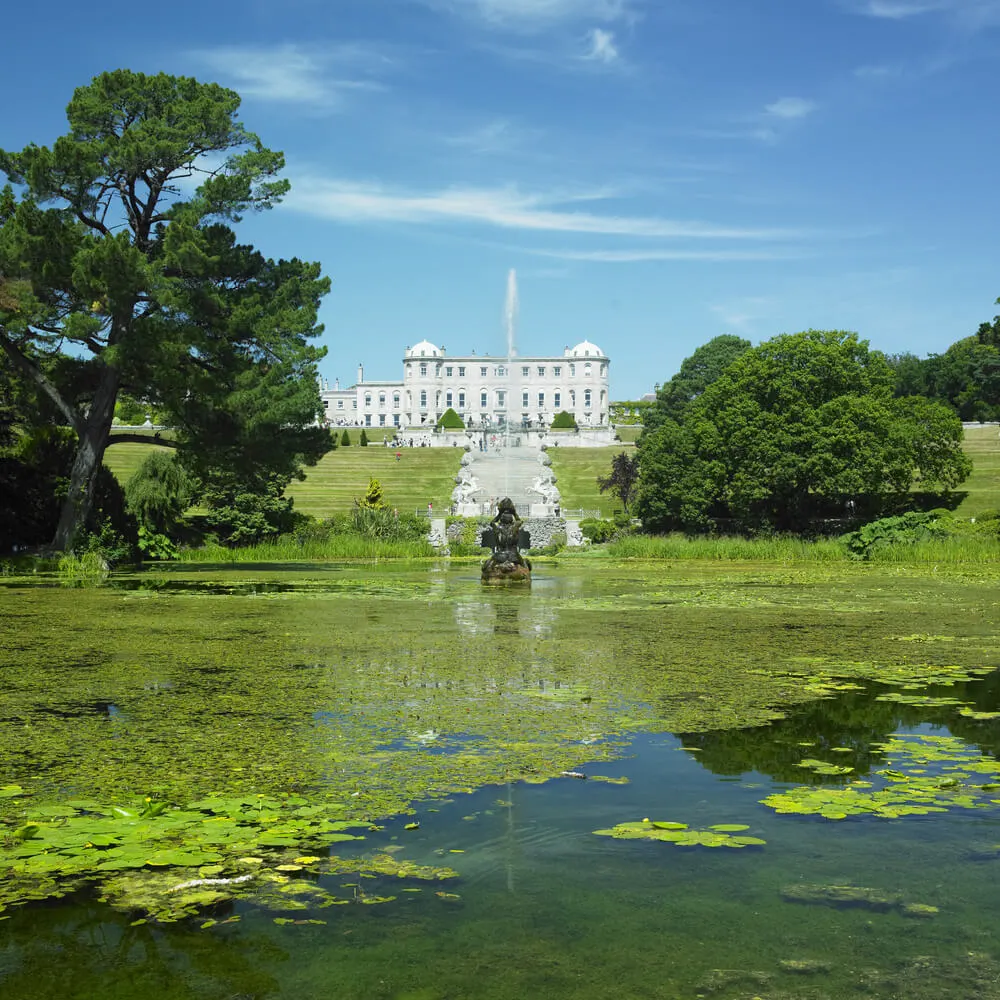
June, July and August herald the summer months in Ireland and are a great time to explore Ireland and see the sights at their best.
Typically, these months have decent weather with a marked increase in the average temperatures since spring. In this mild climate, you can expect temperatures of about 16-20 °C (60-68°F), up to 18 hours of daylight around the summer solstice and, generally speaking, a limited number of rainy days. Depending on what you are planning to do on your trip, this might be the optimum time to plan your vacation to Ireland.
Long days, with dusky bright skies extending well into the late evening (until after 10.00 p.m. in June) characterize this lovely season of the year. By the end of August (and definitely in September) the evenings start to noticeably shorten as they draw towards autumn and winter.
While tourists holiday in Ireland all year round, the summer months are peak tourist season. July being usually the most popular month with tourists, especially with tourists from the United States.
Trip Ideas: Why not make the most of the daylight and travel to the popular Irish tourist sights and attractions (check out our must see attractions or secret sights in Dublin here) either very early in the morning or late in the evening to avoid the crowds?
Regardless of whether you want to visit the Guinness Storehouse in Dublin, get a crowd-free photo at the Giant’s Causeway in Northern Ireland or want to have (almost) empty beaches on the Dingle Peninsula on the Wild Atlantic Way, try to maximize the early mornings and late evenings. It will be worth it!
When is fall in Ireland?
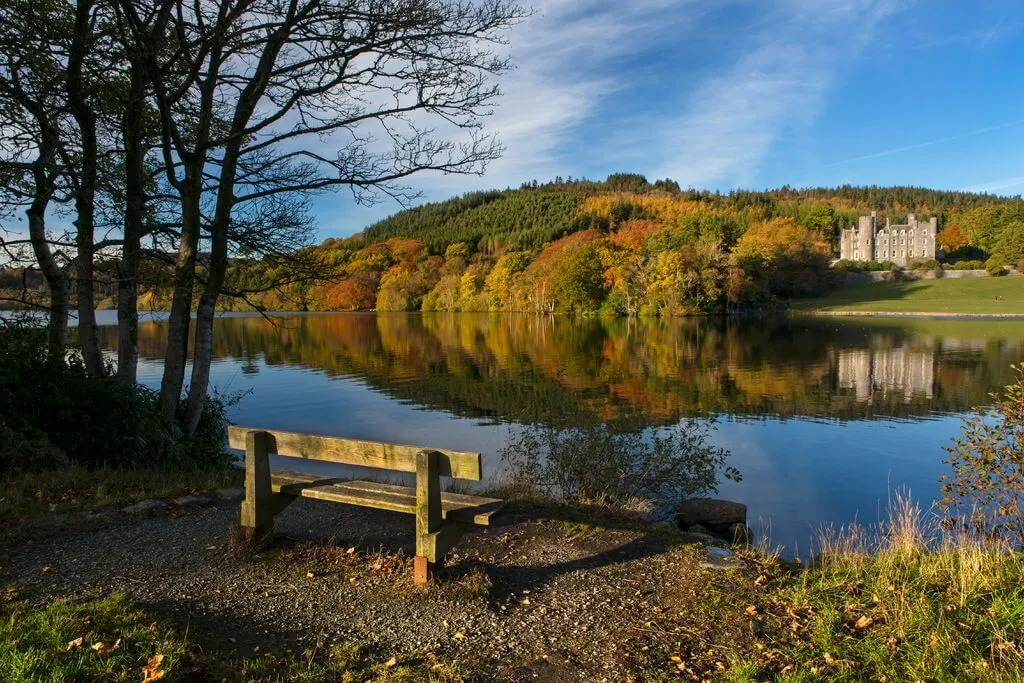
Fall, or autumn as the season is better known in Ireland, can be a time of good, but also very mixed weather. The average temperatures cool to about 14-18 °C (57-64 °F) from the summer highs and even as early as late August or definitely early September the evenings start to feel chilly. Particularly in the seasons of fall, winter and spring it is advisable to dress in layers so that you can easily add or remove them as required.
Rainfall is also higher at this time of year with westerly winds bringing moderate to heavy showers in October and November.
Crisp, cold September days with layers of fog blanketing the mountains are truly stunning. Images like these often feature in the most beautiful landscape calendars of Ireland.
If you plan on doing a road trip during this time, the rustic autumn colors of the foliage and scenery of the national parks and nature reserves will no doubt leave a lasting impression.

The charming towns and villages along Wild Atlantic Way and the Causeway Coastal Route in Northern Ireland with great options for food, drink and lively traditional Irish music will keep you entertained in the evenings!
When is winter in Ireland?
December, January and February are the winter months in Ireland. The days are short with only 7.5 hours of daylight on December 21st and the weather often tends to be windy, wet and cold with average temperatures ranging between about 4-6 °C (39-42 °F).
Heavy snow is a very rare occurrence in Ireland, due to the temperate Irish climate with the odd year having a bit more than a “decent sprinkling” of snow. The further north you travel on the island, the greater the chances of snow, wintry showers and icy conditions. County Donegal and some of Northern Ireland experience harsher winters than the rest of the island.
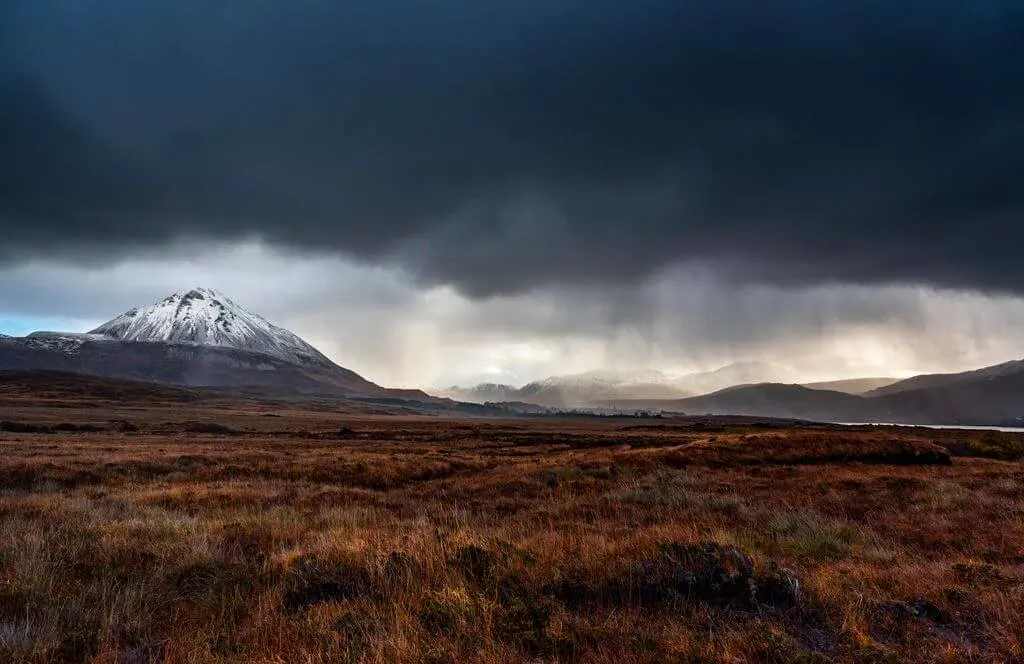
While summer is a better time for outdoor activities, there is plenty to keep you occupied in winter in Ireland as well. It is a great time to explore Ireland for a culinary experience to sample lots of tasty food during the Christmas holiday season.
If you are looking for some trip ideas or inspiration for your Ireland travel experience during the winter months, then check out our list of top sights for a Dublin city break around New Year or visit Tourism Ireland for some more information on other regions.
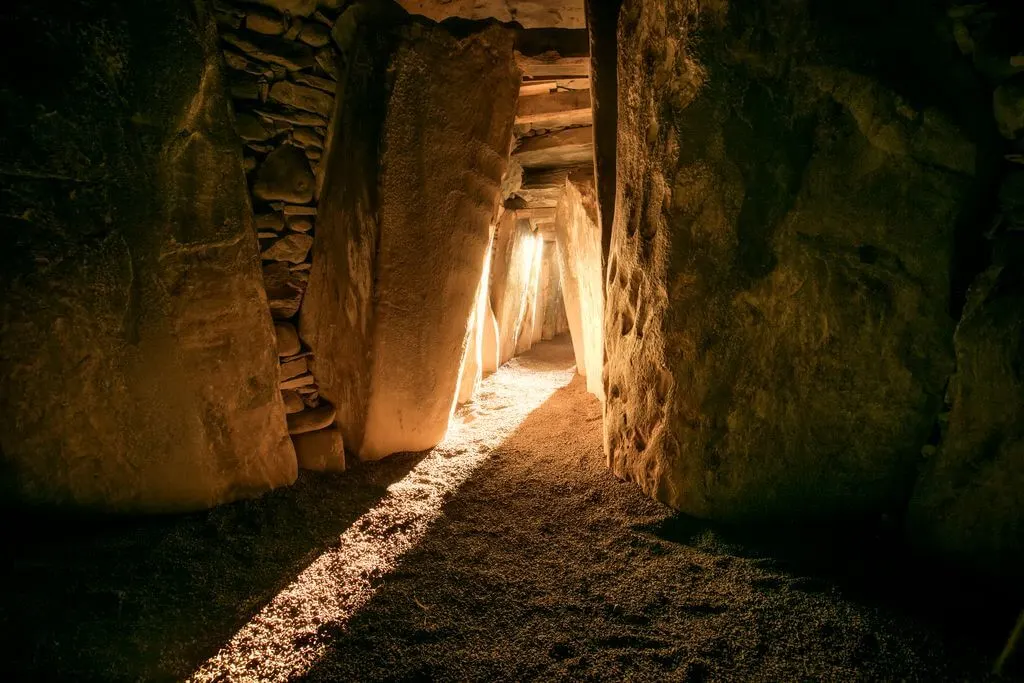
Ireland’s Ancient East is home to Newgrange in County Meath and it is one of the most special places in Ireland in Ireland in December. The lucky lottery winners picked from thousands of applicants are permitted to enter the burial chamber to witness the sunlight entering the burial passageway around the time of the winter solstice. Of course the sunlight is weather dependent, so this phenomenon is not visible every year.
Ireland Tourist Seasons
What is the peak tourist season in Ireland?
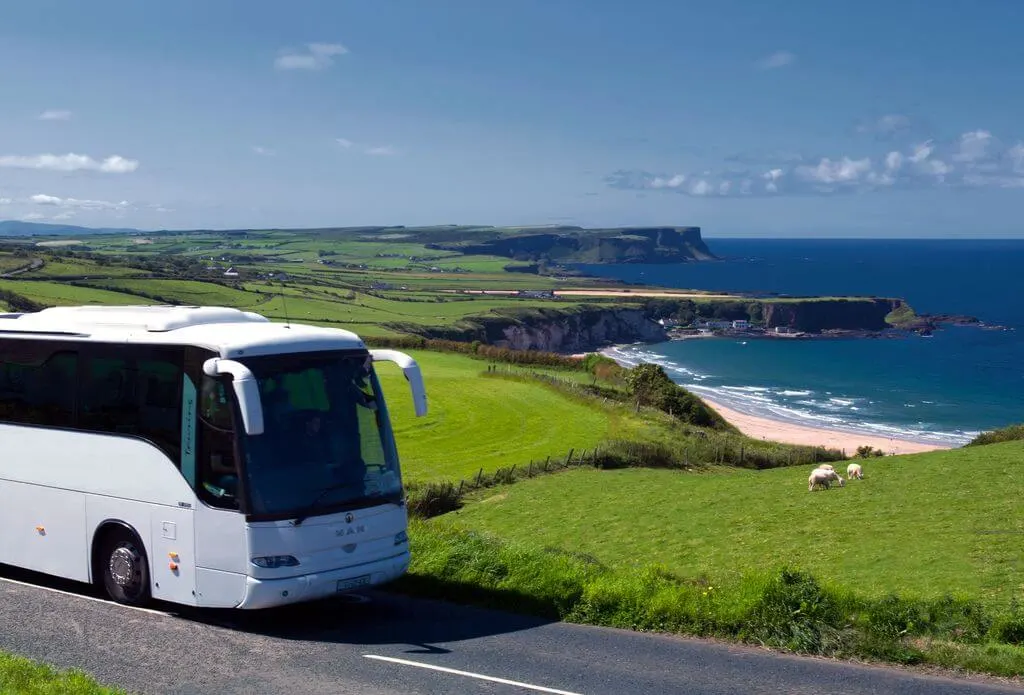
The high season in Ireland is during the summer months from about mid-June, July and August, as well as for shorter periods of time around Christmas, New Year and a few days around St. Patrick’s Day (March 17th) are considered to be the peak season in Ireland.
The popularity of the summer months for Ireland travel holidays stems from the weather being (generally) better. Visitors can hope to encounter less rain than other times of the year, and experience longer daylight hours. Thus making it a better time of the year for road trips and outdoor activities, such as hiking in national parks. Many live music sessions, food festivals and other Irish street festival events are spread throughout the country during the summer months.
In recent times, Ireland has been used as a filming location for Star Wars (get your Star Wars trip ideas here!), Harry Potter (check our guide to all things Harry Potter in Ireland) and Northern Ireland was used extensively during the filming of Game of Thrones. Film tourism is booming and has opened up the beauty of the island of Ireland with many new tourists exploring this country.
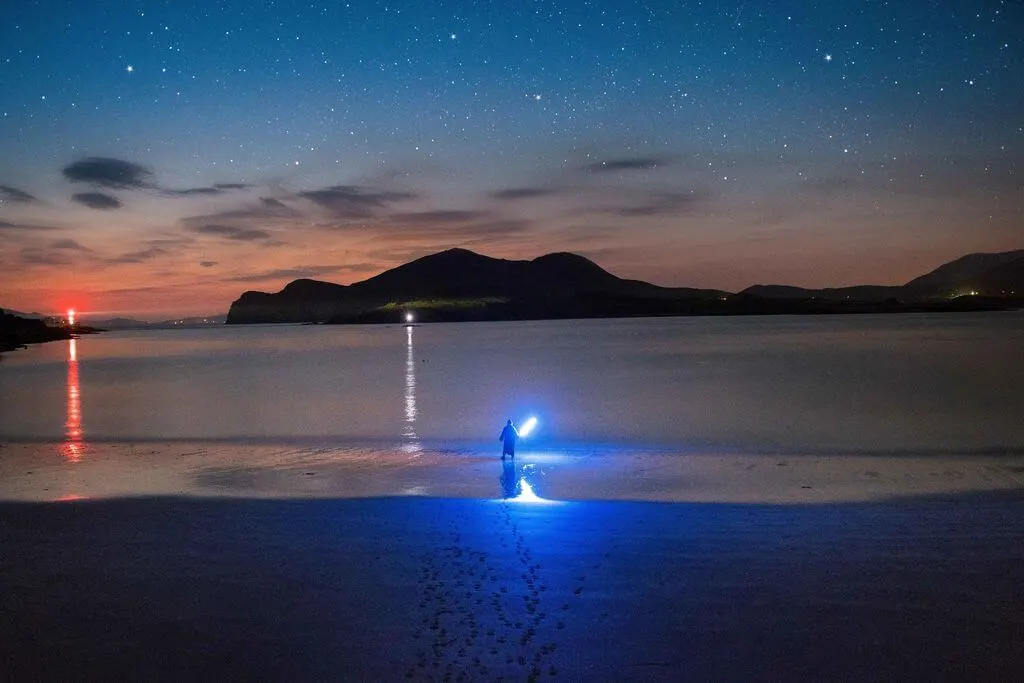
Christmas and New Year are peak travel times in most countries and Ireland is no exception! If you plan on traveling during this time, be sure to book well in advance!
Don’t get caught out with the peak season days around St. Patrick’s Day in the Emerald Isle. There is a big influx of tourists from all over the world, with large numbers coming from the United States to see the parade in Dublin.
Visiting Ireland during the peak season may result in limited options on travel deals. Prices on hotels, travel, car rentals and air travel are likely to be considerably higher than average during the low season in winter or shoulder season when there are fewer crowds.
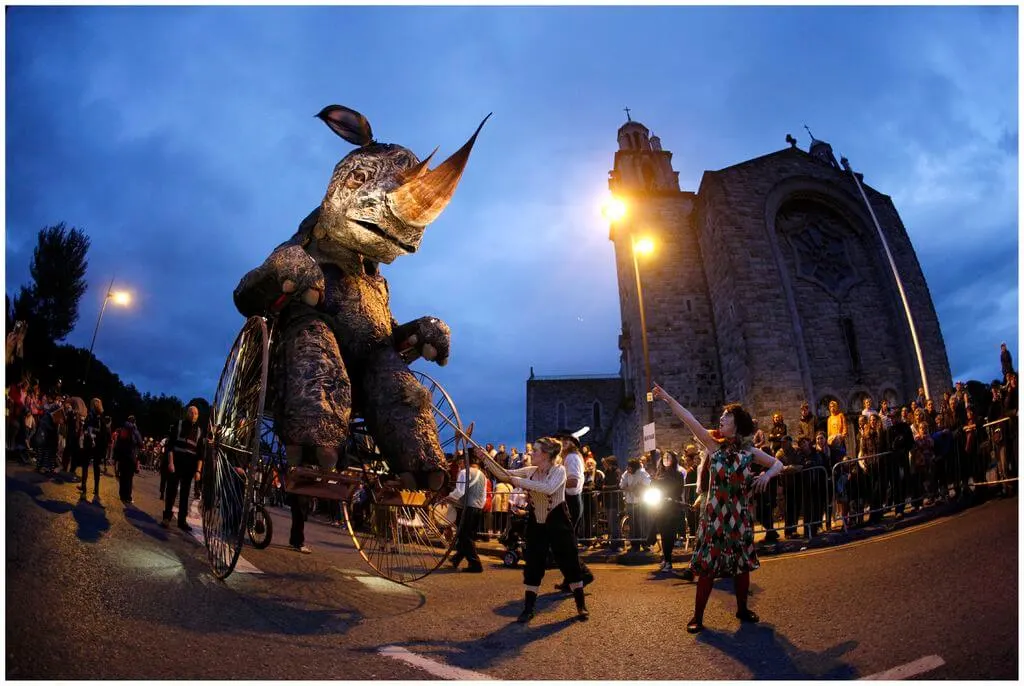
Travel tips: Unless you are not flexible with your travel dates, why not check out the shoulder season instead? It is likely to save you money, you will encounter less crowds and there are still plenty of attractions, arts festival and music festival events taking place around the country.
Shoulder Season Ireland
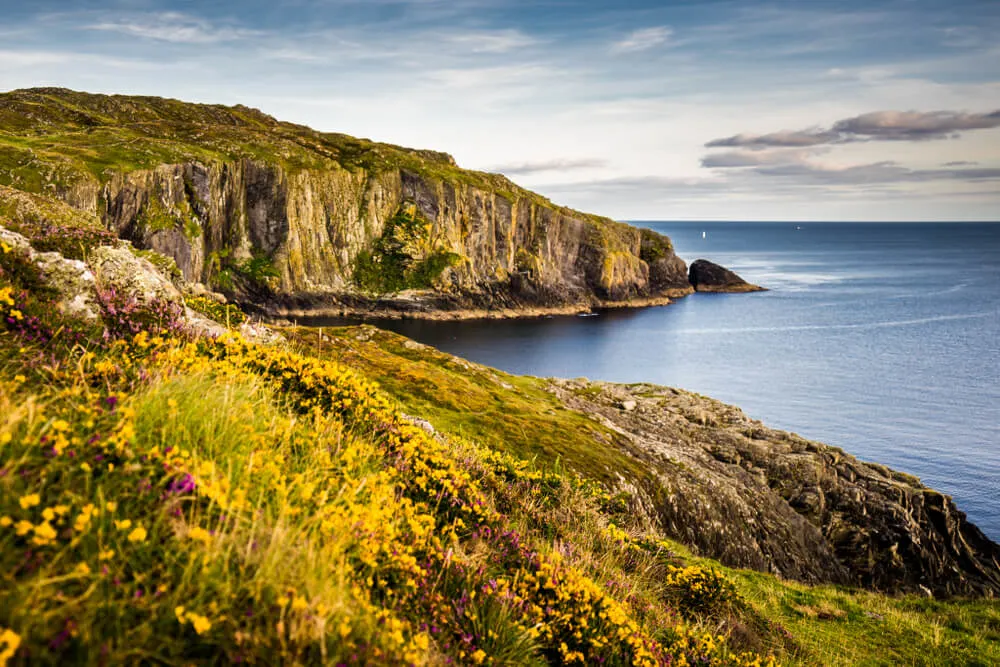
Travel guides about Ireland state that the shoulder season or mid-season for tourism is April and May in late spring and September and October in early fall. Generally, these months are the best to travel to Ireland and Scotland too, if anyone wants to link both in one trip!
During these months, Ireland (along with several other countries in Europe) enjoy benefits similar to those found during the main peak season with regards to weather. The main differences being that there are fewer tourists and the costs associated with travel, including flights to Ireland, are not as high as the summer.
A bank holiday Monday takes place both in the month of May and in October. Generally, you will see an increase in the cost of travel and accommodation around such a public holiday.
Ireland Off Season
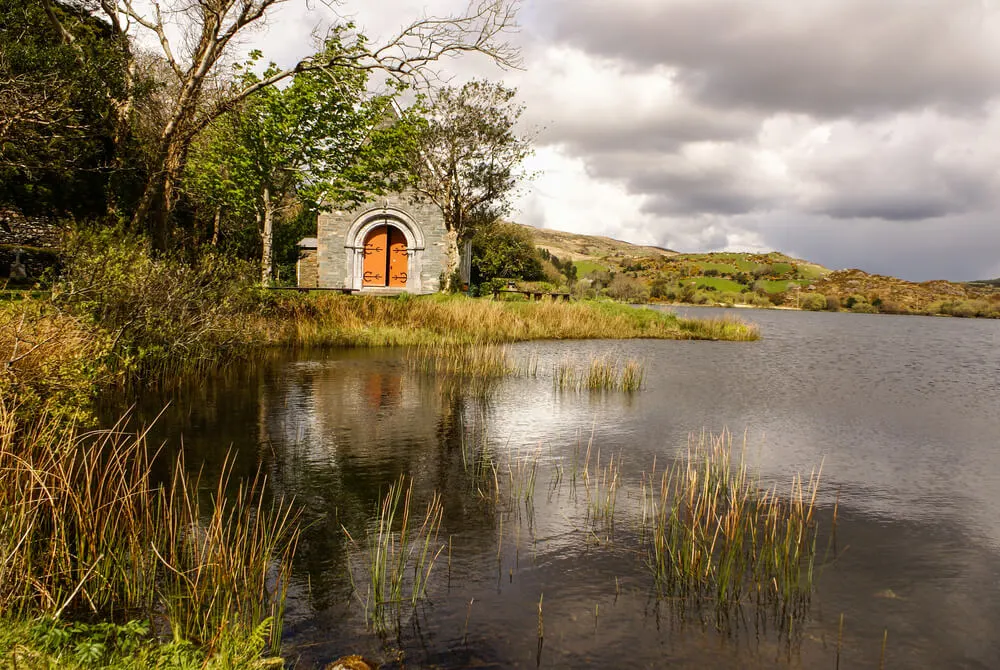
Roughly mid-October to the end of March is considered to be off season or low season in Ireland. (The time around Christmas, New Year and St. Patrick’s Day (March 17th) are not considered low season though.)
Temperatures are considered to be quite mild with the average falling between 2-11 °C (ca. 35-51 °F) and while you may encounter a bit of rain, snow is likely to be limited.
Travel tips for this time of year are to bring layers of clothing and decent waterproofs. Personally, I prefer wearing a hood or a hat than using an umbrella as it can be a little windy sometimes in Ireland!
What are the advantages of visiting Ireland off season?
- Accommodation and airfares usually cost less and good bargains can be found in certain hotels
- There are fewer tourists and you will have to queue less at the top sights
- Traffic in the popular tourist areas (such as the Ring of Kerry) will be considerably lighter
- You can enjoy the many beautiful Irish landscapes and beaches in relative solitude
However, in comparison to summer with longer daylight hours and (at least) the possibly better weather, there are a few downsides to traveling during this time of the year.
Apart from the increased likelihood of inclement weather during your stay, the main drawback for me is the shorter days, which is sometimes reflected in the opening hours of attractions. Other attractions or guesthouse accommodation may be closed completely during the quieter season.
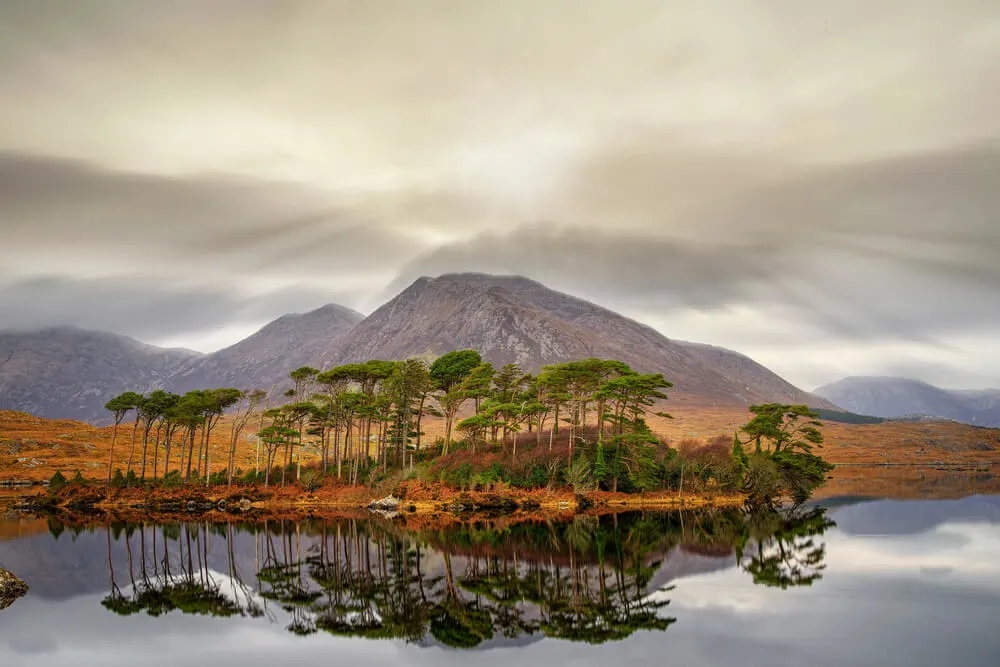
Outdoor activities are still possible during the off-season period, but you must plan accordingly with the amount of daylight available and have the appropriate level of experience. Some of my best hikes in Ireland have been during the winter months.
There are still plenty of other attractions, events and festivals to keep you more than occupied on your trip to the Emerald Isle during these winter months.
When is the best time to visit Ireland?
The best time of year to visit Ireland and Northern Ireland is during the months of April, May and September. During these months the weather can be pleasant and settled with average temperatures of about 8-10 °C (46-50 °F), occasionally 15 °C (59 °F) in April and May, and about 14-18 °C (57-64 °F) in September.
In contrast to the darker winter months, the greater number of daylight hours during the months of April, May and September allow you to pack more activities and sightseeing into each day. Although it might not be the cheapest time to travel to Ireland, you will benefit from avoiding the higher prices and limited availability of hotels associated with the peak summer season in June, July and August and also around Christmas and New Year.
There are many events during these months to make your trip extra special. Why not visit an arts festival (Listowel Writers Week festival in May) or a food festival, such as the Waterford Harvest Festival in September?
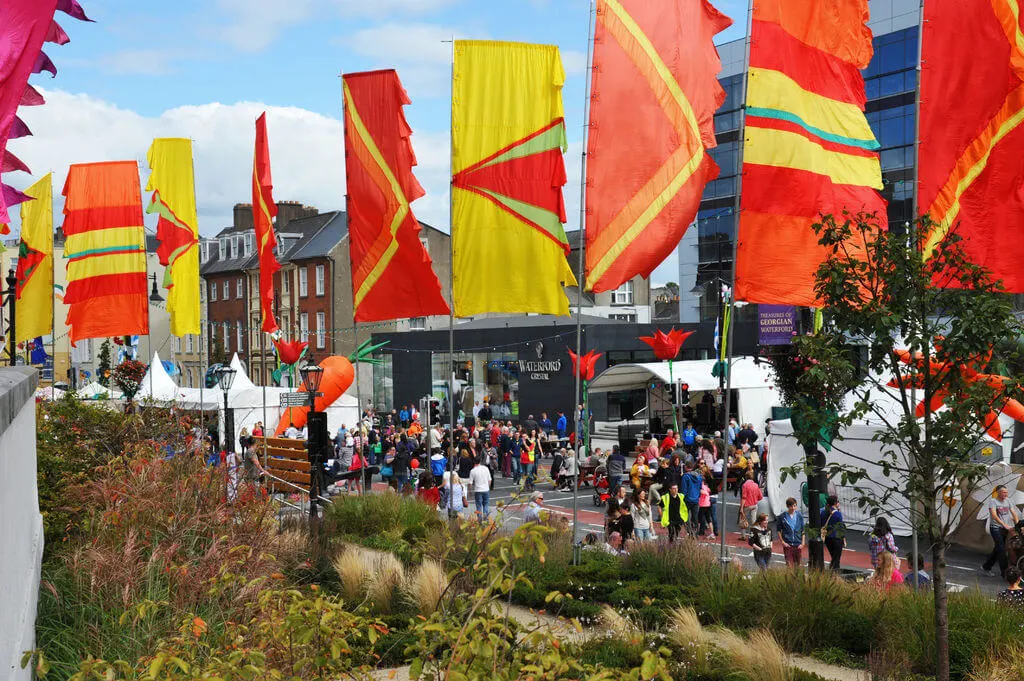
While the main music festival season is during the summer months, a number of music festivals are held during April, May and September including Fleadh Nua in Ennis, which takes place towards the end of May. Live music can be found in pubs throughout the year.
Realistically, you are probably visiting Ireland for some reason other than the weather. There is no guarantee as to when exactly the best weather in Ireland is, because it rains throughout the year. If you are lucky, you can experience glorious sunny days in November as part of your Ireland tour. However, you might experience a wash-out during even in the supposed “driest” months of April and sometimes June.
Our best travel tips for an Ireland tour are to prepare for all eventualities regarding Irish weather, bring the right clothes and equipment to make sure that the weather doesn’t stop you from making the most of your trip. When all else fails, enjoy the multitude of great indoor sights and attractions that the Emerald Isle has to offer!
Bonus tips: Keep an eye out for public holidays, such as Easter that often falls in April, or the bank holiday in May, which falls on the first Monday of the month. Dublin, in particular, can be very busy during these times and you can expect higher prices for accommodation.
Alternatively, June can also be a lovely time to visit Ireland. Then you will also be able to take part in the Bloomsday Festival (June 16th) to celebrate the famous novel Ulysses by James Joyce.
What to expect in Ireland weatherwise
When is the best time to visit Ireland weatherwise
It can be difficult to determine what is the best month for weather in Ireland, but April, May and September stand out as some of the best months to travel to Ireland. Regardless of the time of year, you can never be completely certain of the weather on the island of Ireland and rain is likely throughout the year.
However, these three months in late spring and early fall can have settled weather, pleasant temperatures (approx. April: 8 °C (46 °F), May: 11 °C (52 °F) and September: 13 °C (55 °F)) and a good number of daylight hours (at least greater than 13 hours) to help enable you to maximize your itinerary.
As these months are not during the summer, you might still find some travel deals on flights, hotels and attractions. There are many events, festivals and local farmers markets that take place during this time that are well worth visiting.
Ireland Climate Change: 2019 Year Summary
The latest Irish climate data published by Met Éireann show that over the last 9 consecutive years (2011-2019) Ireland experienced higher temperatures than the usual long-term average records. This temperature increase trend follows the pattern of global warming seen in other areas of the world, which can have disastrous consequences for biodiversity and the planet.
While Ireland escaped much of the summer heat waves that affected Europe, temperatures were generally higher than normal. (The highest recorded temperature in 2019 was 28.4°C (83.14 °F) in Shannon on June 27th).
In 2019, all of the average sunshine totals and the majority of average rainfall totals measured throughout the country were also greater than the long-term average records.
Does it rain a lot in Ireland?
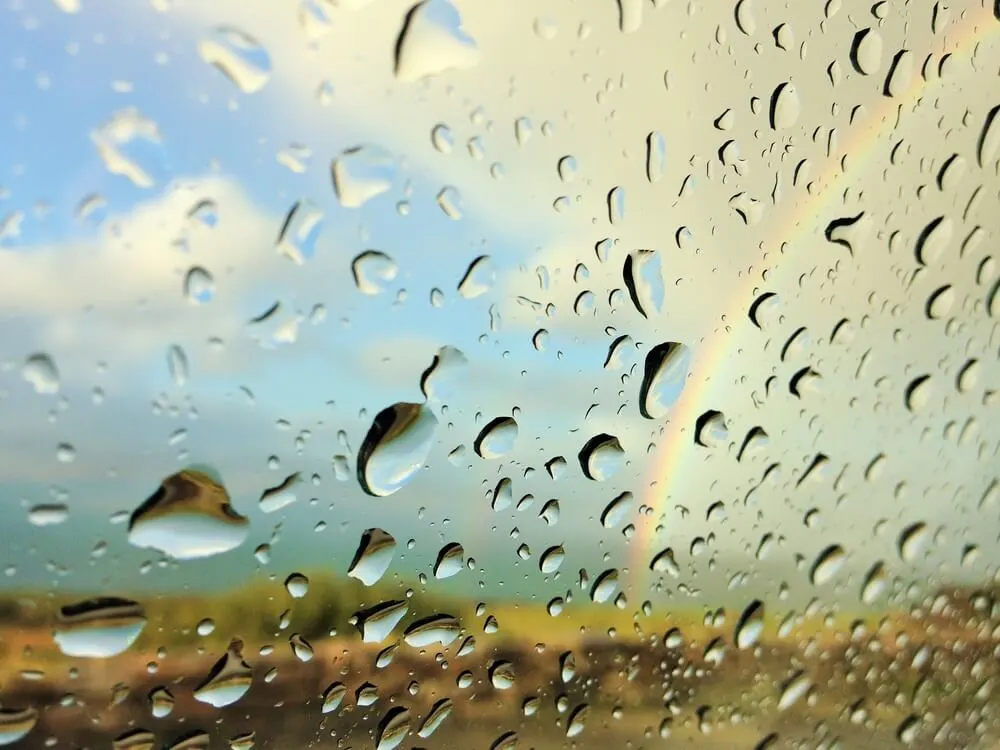
Yes, Ireland does receive a lot of rainfall year round, but the amount and frequency varies across the country. The west coast of the island receives more rainfall and a higher number of wet days (days where greater than 1 mm (0.04 inch) of precipitation is recorded) per year than the east coast and inland areas.
Dublin on the east coast is one of the driest places in the country and received about 890 mm (35 inches) of rainfall spread over roughly 134 wet days in 2019. In contrast, Newport, County Mayo in the west of the country receives about 1800 mm (71 inches) of rain per annum and experiences at least 1 mm of rainfall on 223 days over the course in 2019. Belfast in Northern Ireland generally receives approximately 900 mm (35 inches) of rain and 210 wet days per year.
When asked about Ireland, many people mention rain, which is not surprising given Ireland’s geographical location in Europe and its maritime climate. Ireland’s climate is strongly influenced by the warm temperature of the Gulf Stream ocean current that extends northwards along the eastern coast of the United States and Canada before crossing the Atlantic and reaching Ireland.
Don’t be fooled though, the term “warm” is relative. The average sea temperature off the coast of Ireland is about 6 °C (43 °F) in Feb, 18°C (64 °F) in July and roughly 9 °C (48 °F) in December.
Irish weather changes frequently that sometimes it is possible to experience all the seasons in one day. Winter, spring, summer or fall, you should expect to encounter rain at some stage during your vacation in Ireland. Rain is part of the Ireland travel experience!

The majority of the precipitation falls as rain rather than as snow or hail, due to the generally mild average temperatures.
Does it snow in Ireland?
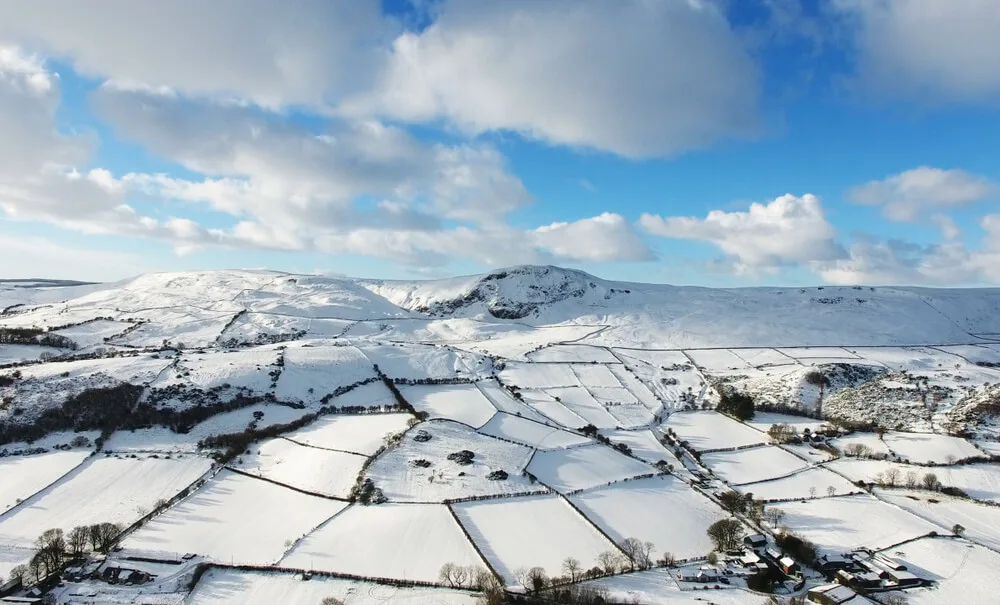
Yes, Ireland does get snow from time to time. The highest likelihood of snow is highest in January or February when the average temperature is between 2-8 °C (36-46 °F), but snow can occur during any cold weather period between November and April.
The influence of the Gulf Stream in the Atlantic Ocean, tends to limit the very harsh snowfalls that are typical of the climate along the east coast of the United States.
Usually, Ireland experiences just a light sprinkling of snow in the low-lying areas, with heavier snowfall sometimes occurring in upland areas and further north. Within a day or two, snow lying on the ground generally disappears.
One recent exception was Storm Emma in March of 2018 which brought heavy snowfalls across the country of 30 cm (12 inches) and up to about 60 cm (24 inches) in some areas of the Wicklow Mountains in County Wicklow. The chaos lasted several days and shut many businesses and schools nationwide.
Because it does not snow in Ireland all that often, kids and adults alike or often quite excited about the event. It releases the inner kid in most of us who are more familiar with rain!
Does it snow in Ireland at Christmas? It has snowed in Ireland at Christmas time over the years on several occasions, but it is not all that likely during the average year. For example, Dublin Airport weather station recorded snow on Christmas day in 1950, 1956, 1962, 1964, 1970, 1984, 1990, 1993, 1995, 1999, 2000, 2004 and 2010 since records began in 1941.
Christmas Day in December 2010 was an example of a winter wonderland in Ireland. There was a thick covering of snow over Ireland from Malin Head, (Ireland’s most northerly point) to Mizen Head (Ireland’s most southerly point), which is quite unusual. On this day, there were also record breaking cold temperatures.
The coldest air temperature ever recorded for the month of December occurred on this day in Straide, County Mayo ( -17.5 °C or 0.5 °F).
More information about Irish weather can be found on the website or app product of the local weather service, Met Éireann. The weather service for Northern Ireland is covered by the Met Office of the United Kingdom. Another useful source of weather statistics and weather forecasts is the Norwegian weather service provider Yr.
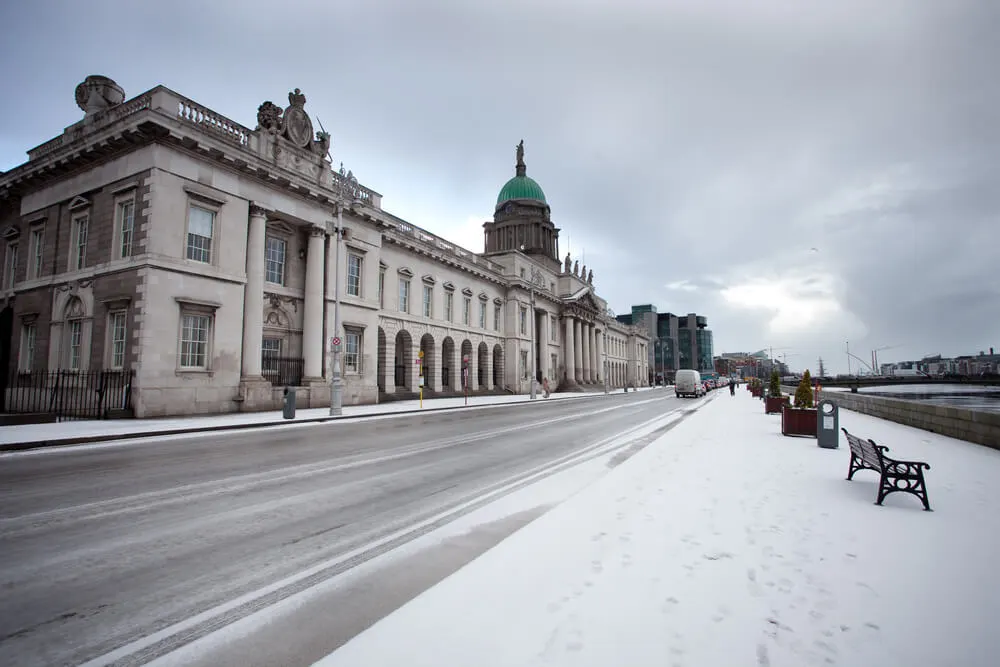
What is the best month to visit Ireland?
May is probably the best month to visit Ireland, based on my experiences of both living and holidaying in Ireland. Peak season hasn’t started yet, but the days are long and temperatures are pleasant at about 11 °C (52 °F). Most tourist attractions are open and operate their full summer schedules, but the number of tourists, crowds and queues are still very manageable.
Best time to visit Ireland according to activity
When is the best time to visit Ireland for road trips?
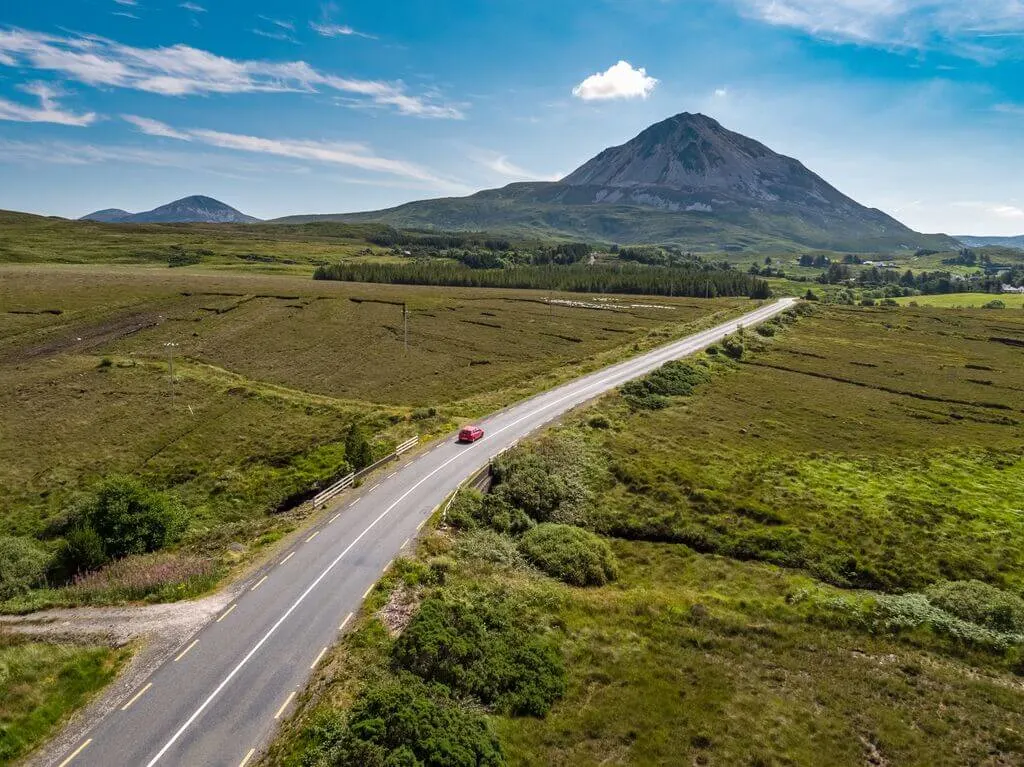
The number of daylight hours is an important factor when planning a road trip by car or by motorcycle. This makes the summer months of June, July and August the best time to visit Ireland for road trips. In peak summer, there can be about 18 hours of brightness. Sunrise can be as early as 5.00 a.m. on the days in June and the long dusk means that the sky is still bright long after the sun sets after 10.00 p.m.
Extra daylight makes sightseeing, especially driving on unfamiliar roads, considerably easier. The weather during the summer months is generally better than other times of the year. Additionally, a road trip at this time of the year means that you won’t encounter icy roads typically associated with the winter and early spring months.
The months of June, July and August are the warmest with average temperatures 16-20 °C (60-68 °F). Why not see if you are brave enough to take a swim when the sea temperatures are at a maximum temperature of 16 °C (61 °F)?! There are great designated swimming and surfing beaches along the Wild Atlantic Way coastal drive (including Stradbally Strand on the Dingle Peninsula) or Benone Strand in Northern Ireland.
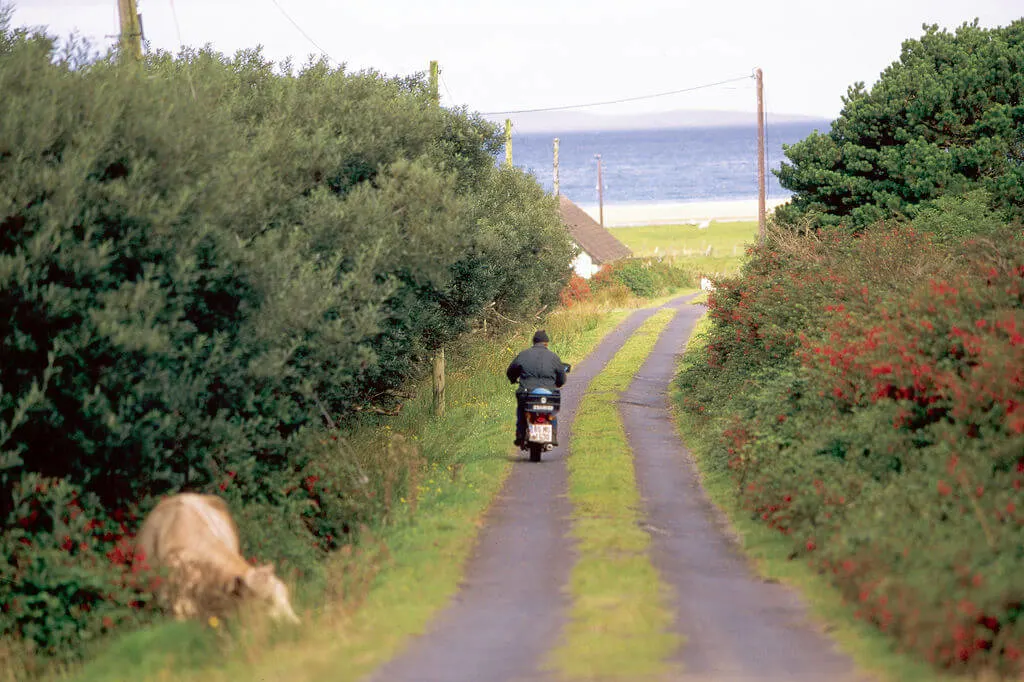
Rain is generally kept to a minimum during the summer months, with showers more frequent that longer bouts of rain. Always plan for rain though, regardless of when you travel to Ireland.
Summer is a great time for a road trip tour of the Emerald Isle as many Irish music festivals and other events taking place all over the country enhance any road trip itinerary.
Perhaps you can join in the festivities of the James Joyce Bloomsday Festival (June 16th in Dublin) inspired by his famous book Ulysses or the Galway International Arts Festival in July with the focus on drama, comedy and music.
Foodies are well looked after with the Taste of Dublin Festival in June or A Taste of Donegal Food Festival in August. While these festivals are not insider travel tips, they will certainly be one of the highlights of your road trip!
Best time to go camping in Ireland
Also applicable for caravans, campervans, RVs, motorhomes and glamping
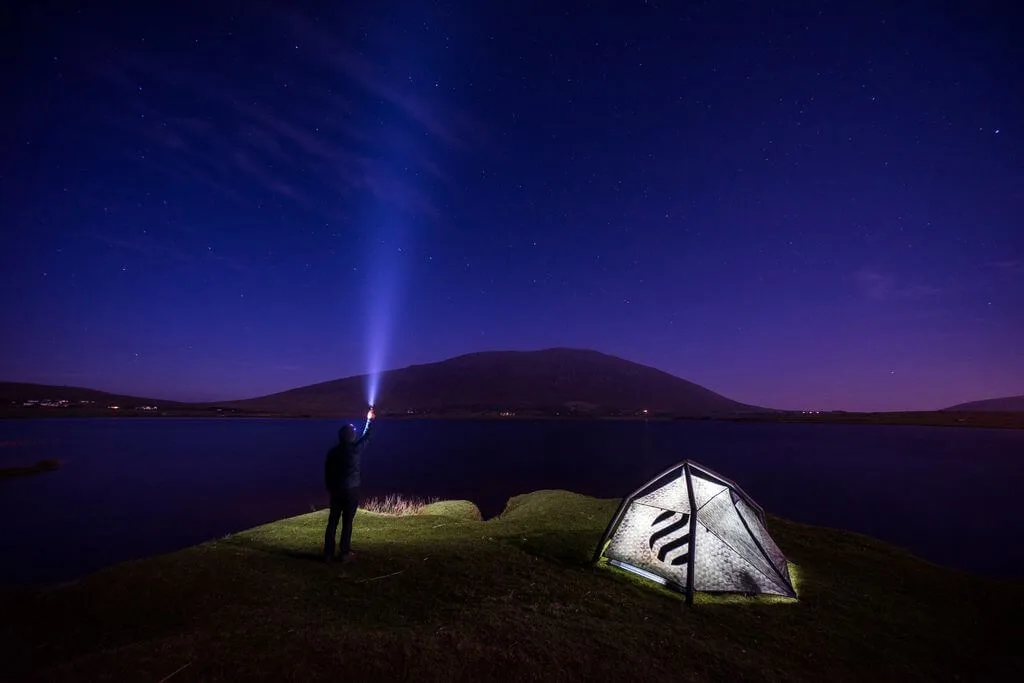
Camping trips in Ireland are best in the summer months of June, July and August when the average temperature at night does not fall below about 10°C (50 °F), but the mild nights in late spring and early fall are also suitable.
During the months of July and August, it is necessary to book camping spots or pitches in advance per night at each camping park along your route. If you value a few days of quiet camping, then aim to holiday during April, May, September or October when the weather is more likely to be camping friendly during the pre- or post- camping season.
Some camping and caravan park sites in Ireland are open year round (such as Camac Valley Tourist Caravan and Camping Park, Dublin), while others close for the winter months (Eagle Point Camping in Banty, County Cork).
The Ireland Camping Council and Tourism Ireland websites should be your first point of contact for more detailed information. These sites can provide tips and advice about where to go camping, the Irish caravan and camping park locations, travel guide information, the latest camping related news and free local amenities.
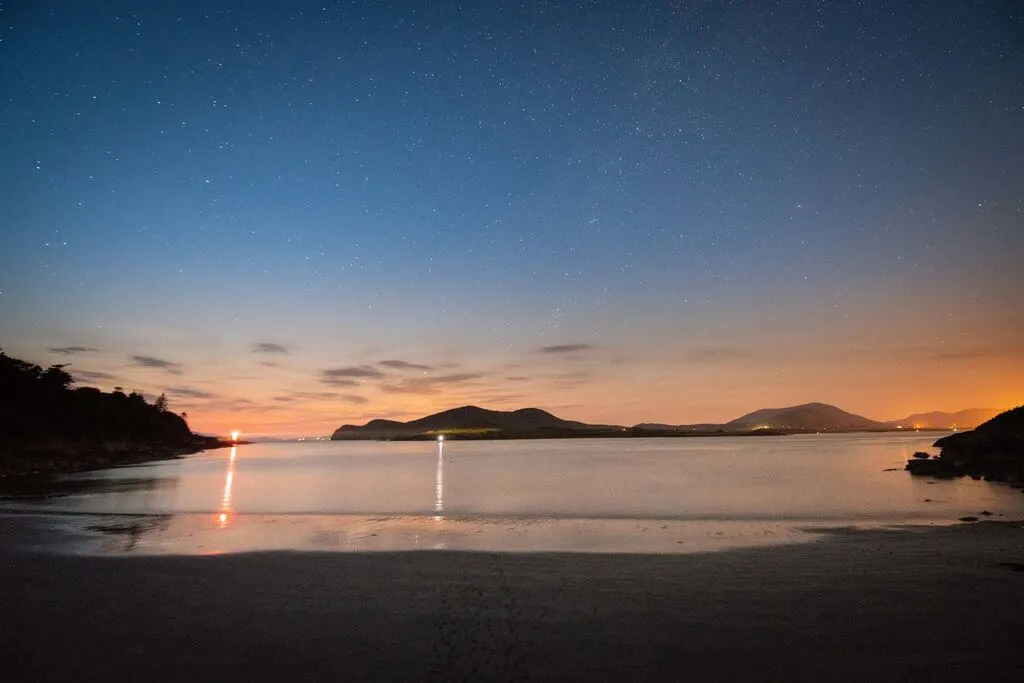
Camping trips in Ireland offer wonderful views of the skies (with two International Dark Sky Reserves in the country: Mayo Dark Sky Reserve Park and Kerry International Dark Sky Reserve), breathtaking mountains and beach-side camping options.
The appeal of a wild camping adventure off the beaten track under the stars has its own special allure, but you should keep in mind that it is necessary to check with the landowner first. This may be difficult or not always possible. If asked by the owner to leave the wild camping place, please do so without any fuss and follow the “leave no trace” principles.
In Ireland travel with a campervan or motorhome can be very enjoyable, once you get used to the narrow roads and driving on the left. Dotted around the Wild Atlantic Way, Causeway Coastline in Northern Ireland and other popular tourist locations across the island, there are occasional viewing spots or resting spots where you can stop with a campervan. These spots are not designed as overnight locations though, and some have restriction barriers for vehicles over 2,5 meters (8′2″ ft).
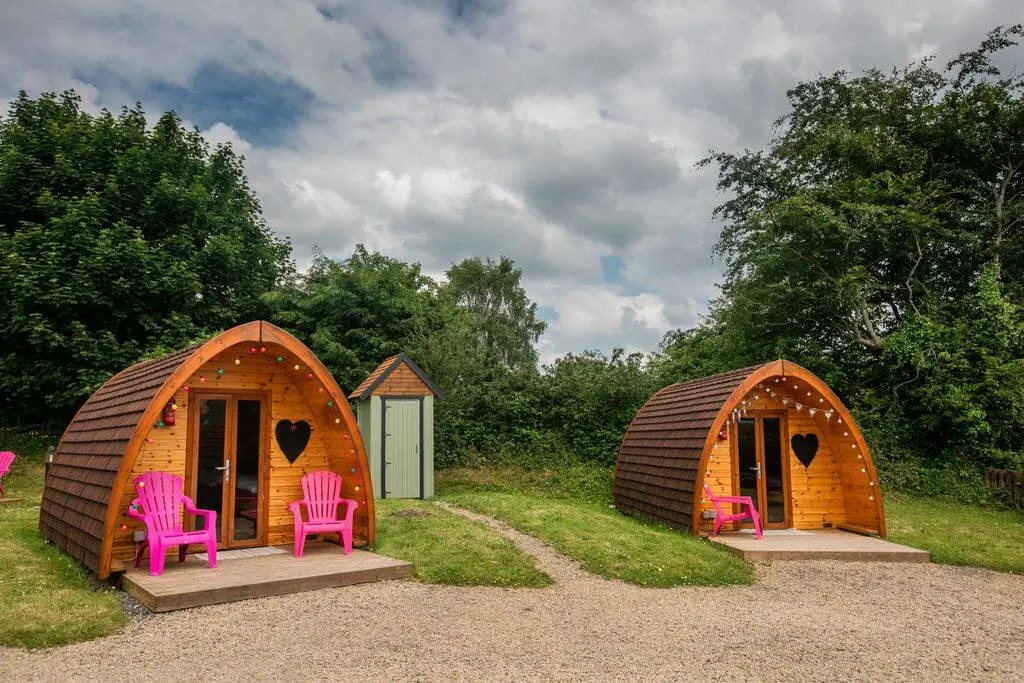
Glamping has become more popular in Ireland recently as a novelty accommodation alternative to hotels or as a unique way to experience festival accommodation (for example Boutique Camping at Electric Picnic). The variety of glamping offers available in Ireland are not just limited to bell tents and include luxury camping possibilities, such as a night in a safari tent, yurt, pod tipi, hut or cabin.
As this is a more sheltered accommodation option, the Irish glamping season extends longer than the regular camping season, with many locations open for bookings from March to November.
When is the best time to visit Ireland for hiking?
The good news is that it is possible to go hiking in Ireland all year round, but the hikes should always be adapted to the weather conditions and daylight available. The summer months of June, July and August are usually the best hiking season in Ireland due to the warmer temperatures (on average 16-20 °C or 60-68 °F) and extended daylight hours (up to 18 hours), which is necessary for longer hikes.
Temperatures on Irish mountains can vary considerably from the base to the summit. Even on a glorious, warm day you will still likely need warm waterproof layers on the top of the mountain. Don’t forget to account for the wind chill factor as well!
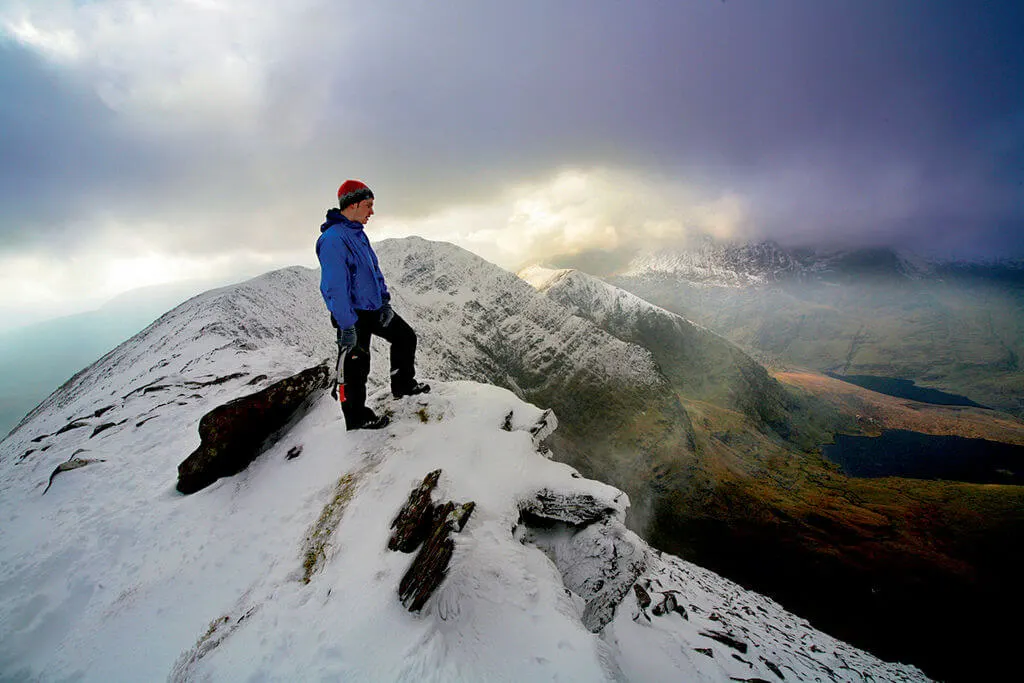
There are many excellent hiking routes in Ireland and some of my personal favourites in Kerry and Galway with excellent views of the Wild Atlantic Way. More details about these can be found in good travel guides. For more inspiration why you should explore the Wild Atlantic Way, check out our post here.
Croagh Patrick in County Mayo (764 m or 2,507 ft) is one of the most famous and the barefoot pilgrimage to the summit takes place each year in on the last Sunday in July.
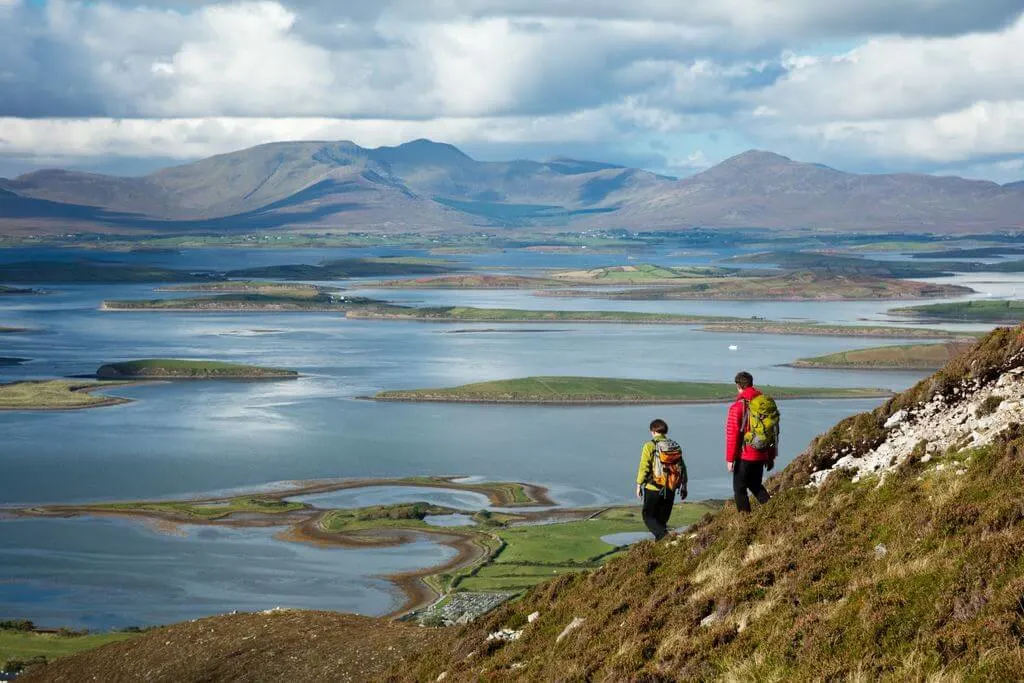
If you plan on visiting Ireland and want to fit in a hike or two, it is important to be well prepared.
Travel Tips: The weather in Irish mountains can change rapidly, sometimes with fog or thick mist blowing in seemingly out of nowhere so always make sure you check the weather forecast regularly. Another thing to note is that most Irish hikes are not marked. You follow trails, without signage so make sure that you have adequate skills.
When is the best time to visit Ireland for sightseeing?
The best time of the year to visit Ireland for sightseeing is slightly off-peak season in April, May, September and early October. Visiting Ireland during this time means there is a reasonable chance of good weather, the opening times of the attractions are similar to peak season and there is less demand for hotels.
Plus, most people agree that sightseeing is likely to be more enjoyable without the crowds, noise, and hustle and bustle associated with the peak summer months.
For an Ireland tour, April and May are recommended as good times for sightseeing because the weather is improving for the better after the winter months and the daylight hours are getting longer. The average temperature is between 8-10 °C (46-50 °F) with some days being as warm as 15 °C (59 °F).
These months are among the driest (each receiving about 80 mm or 3 inches of rainfall per month on average). You might be lucky and encounter a few days of t-shirt weather, but it is best to pack some warmer layers for the Irish weather just in case.
Fall, or autumn in the Emerald Isle is beautiful, which makes September and early October great times for a sightseeing trip. Some of the best places to visit in Ireland, such as the Cliffs of Moher, Glendalough or the Giant’s Causeway and Tollemore Forest Park in Northern Ireland, look even more stunning in the autumnal landscape.
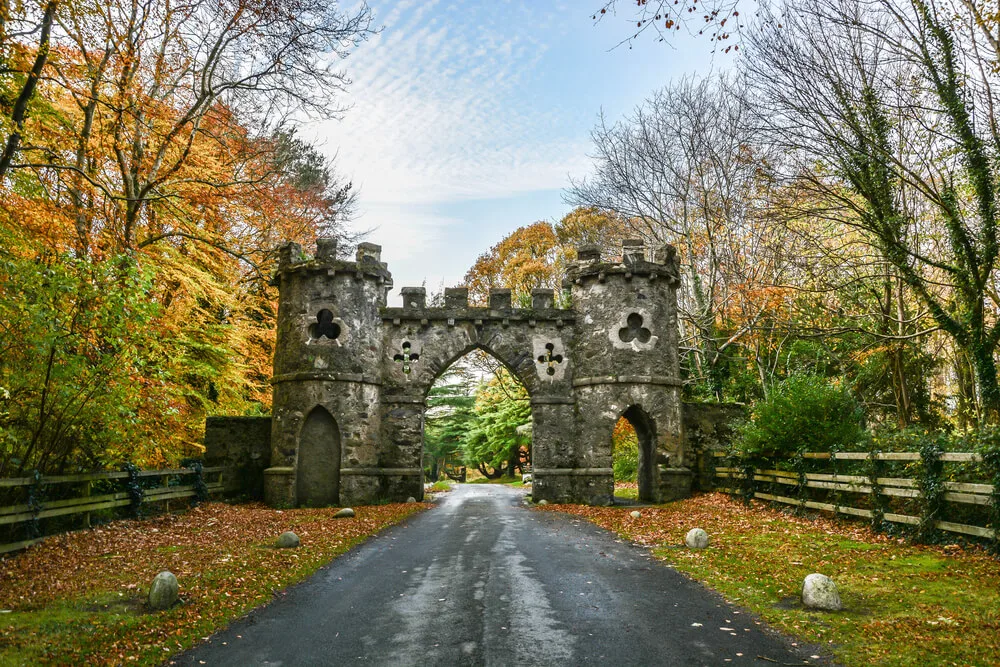
Average temperatures in September and October vary. September is generally warmer with temperatures of 10-17 °C (45-63 °F), while October is cooler 7-14 °C (45-57 °F). Rainfall does start to increase again before winter, so waterproofs are a must.
Travel Tips: As the travel guides say, sightseeing in Ireland is possible at any stage in the year. However, some of the smaller sights and hotels may be closed or else have shorter opening times in the late fall, winter and early spring seasons.
If you are making a long haul flight from the United States or even further afield and want to visit a particular attraction, make sure you check the opening times of the more seasonal attractions in advance.
Keep an eye out for the 9 public holidays spread throughout the year. In addition to New Year’s Day (January 1), St. Patrick’s Day (March 17), Easter Monday, Christmas Day (December 25), St. Stephen’s Day (December 26), there are 4 additional public holidays called “bank holidays”. A bank holiday falls on the first Monday in May, June and August as well as the last Monday in October.
Don’t be fooled into thinking these holidays just affect the banks. The opening hours of attractions and businesses may differ from the norm and public transport will operate with restricted schedules.
Best time to visit Ireland on a budget
The cheapest time to travel to Ireland is during the months of January and February. Airfares are one of the major costs associated with visiting Ireland and these tend to be lowest early in the year making it the cheapest time to fly to Ireland.
Is Ireland expensive to visit? In a nutshell, yes, but cheap trips to Ireland are possible too if you plan ahead and are selective with your itinerary.
Lonely Planet recommends that you should plan a daily budget of at least €80 (ca. US$90) for a budget style holiday with dorm hostel accommodation. For a mid-range holiday, increase that daily budget to up to about €150 (ca. US$170). Of course, there is no upper limit.
As the weather is likely to be mixed and wintery with average temperature around 4-6 °C (39-42 °F) and as the days in January and February are short, it is not surprising that fewer crowds as the majority of tourists avoid this time of year. They are missing out on something special though!
Traveling during these months might limit the amount of sightseeing you do outdoors (but you never know, Irish weather is full of surprises!). It is worth mentioning though, that walking along a windswept beach in Ireland during winter is exceptionally exhilarating!
What about seeing the northern lights? This is also possible to do in Ireland, once you get the right conditions. Check out our detailed Northern Lights in Ireland post here for more information.
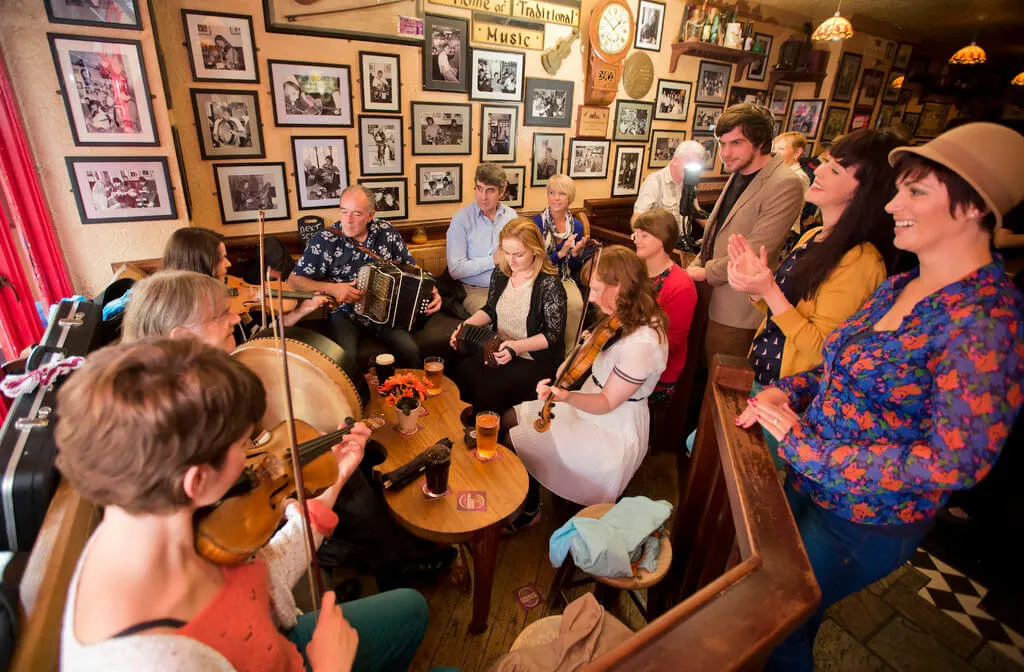
Nevertheless, Ireland is famed for many great things to take your mind off inclement weather including the lively pub atmosphere and for the price of a pint, you can experience live traditional Irish music sessions. Or there are many other free art galleries and museums, spectacular churches and charming towns to keep you entertained without breaking the bank.
Ireland weather by month: Overview
Let’s be clear. Ireland is perched on the edge of Europe and is strongly influenced by the changing weather blown in mostly from the Atlantic. While there is no official rainy season in Ireland, you should expect to encounter at least some rain at some stage during your stay, regardless of what month of year you travel.
This little island has so much to offer with regards to culture, atmosphere, scenery, food, live music and lots more. Weather, however, is usually not towards the top of that list. In fact, the skies above Ireland are generally covered with clouds about half of the time. If you happen to encounter fabulous weather during your stay, count yourself lucky. If you don’t, relax, there will be so much to see and do that the weather will be the least of your concerns!
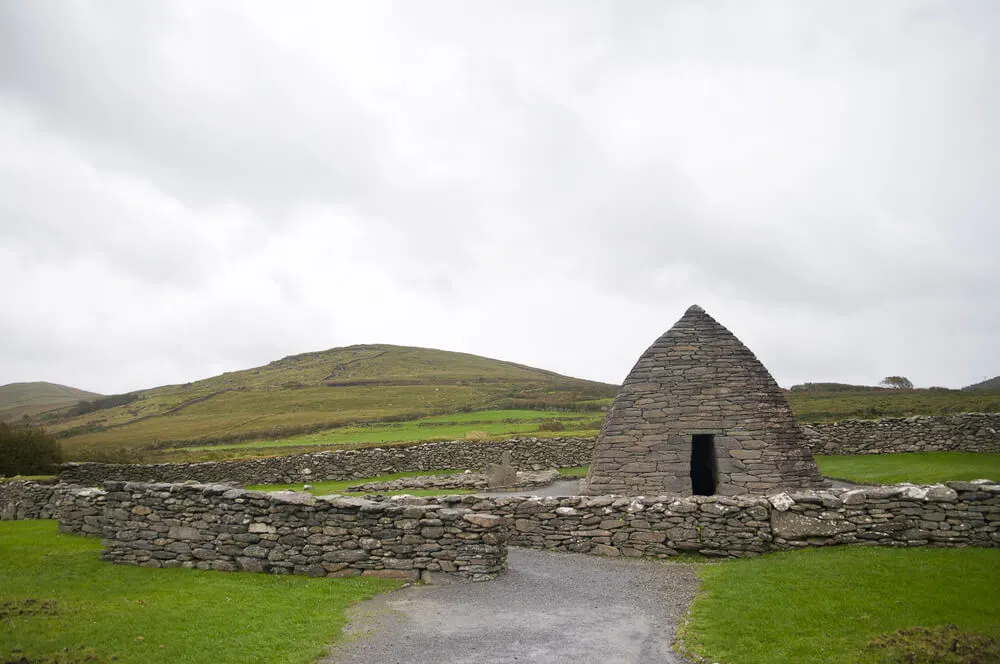
Take a look at the summary of each month to get a breakdown of Ireland temperature by month and Ireland weather by month.
Ireland in January
Most years the weather in January is mixed, usually with a decent helping of wind and rain. Average temperatures of 3-8 °C (37-46 °F) and general Irish weather conditions tend to favour more indoor activities. The days are short, making it the perfect time to plan a city break tour to Dublin, Cork or Galway and explore museums, art galleries, cosy cafés and live music in the pubs.
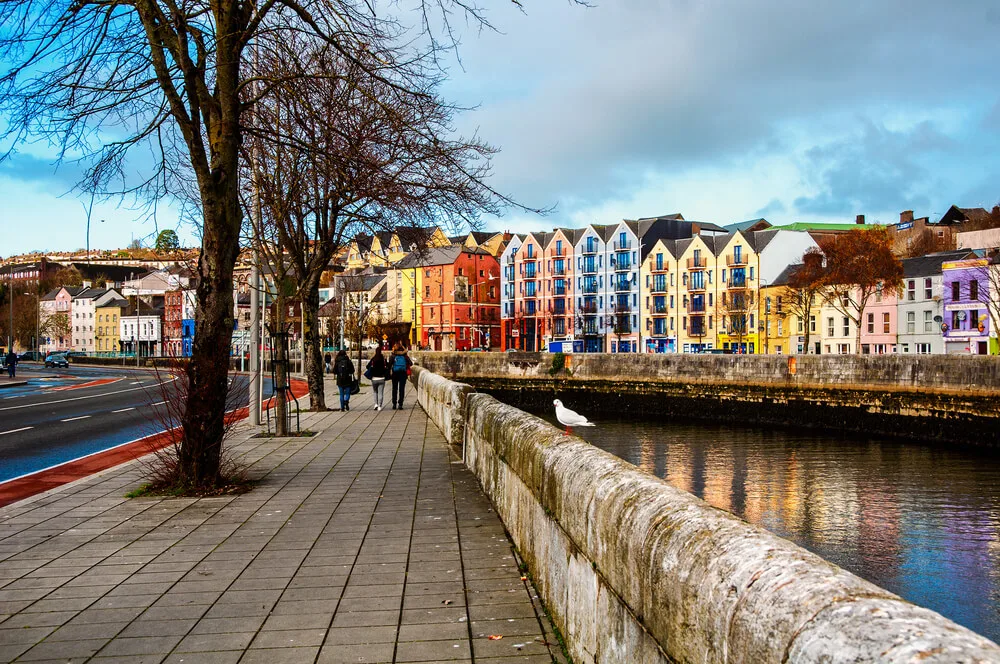
If wild weather doesn’t put you off, then there are fantastic sights along the Wild Atlantic Way on the west coast of Ireland and the Causeway Coastal Route in Northern Ireland, which you are likely to have entirely to yourself during this time. Check out the breathtaking beaches, rugged cliffs and national park destinations that will blow away the cobwebs and leave your reinvigorated for a new year?!
One of the main benefits of travel at this time of year is that in Ireland hotels are likely to have more vacancies and offers around this time, which means you might save on the cost of accommodation during your trip.
Weather in Ireland in January
Be prepared for windy and sometimes stormy weather when visiting Ireland during the month of January. There might also be the odd snowfall or icy road conditions on some days. This makes road trips and outdoor activities, such as hiking, more unpredictable and extra caution should be taken.
The daily average temperature is between 2-8 °C (36-46 °F) and very cold weather doesn’t usually last more than a few days.
Occasionally, Ireland is influenced by colder weather blowing in from Europe during this time of the year, which gives rise to clear, frosty mornings and cold nights. If you do get a chance to visit during this winter wonderland time, be sure to get up early to experience the magic!
| Dublin | Cork | Galway | Belfast | |
| Average temperature Jan. | 5 °C 41 °F | 6 °C 43 °F | 6 °C 43 °F | 4 °C 39 °F |
| Min. & max. temperature Jan. | 2-8 °C 36-46 °F | 3-8 °C 37-46 °F | 3-9 °C 37-48 °F | 2-7 °C 36-45 °F |
| Approx. rainfall Jan. | 62 mm 2″ | 131 mm 5″ | 102 mm 4″ | 93 mm 4″ |
| No. of wet days Jan. (>1.0 mm or 0.04″ precipitation) | 12 | 16 | 16 | 20 |
| Sunrise & sunset Jan. 1st | 8.40 a.m. 4.16 p.m. | 8.41 a.m. 4.33 p.m. | 8.51 a.m. 4.28 p.m. | 8.46 a.m. 4.08 p.m. |
Weather in Dublin Ireland in January
Dublin city is a great place to visit year round. Located on the east coast of Ireland in County Dublin, Ireland’s capital city generally escapes a lot of the wilder and wetter weather blown in from the west via the Atlantic ocean.
You can expect the average temperature to be between 2-8 °C (36-46 °F) on most days. Rainfall on average is also less than in other areas of the country at about 60 mm (2 inches).
In Dublin city the most popular attractions, including the Book of Kells in Trinity College and Temple Bar, are not weather dependent, so you shouldn’t let the winter weather deter your travel to Ireland.
If you have some flexibility during your stay, check the weather forecast in advance to see if it makes sense to plan a day trip to explore some other sights located further outside the city of Dublin. Dublin certainly has a wealth of interesting sights to visit. Check out our Unusual Dublin and Dublin Secret Sights posts some inspiration!
Alternatively, check out one of Dublin’s great luxury hotels for a winter city break treat!
Ireland in February
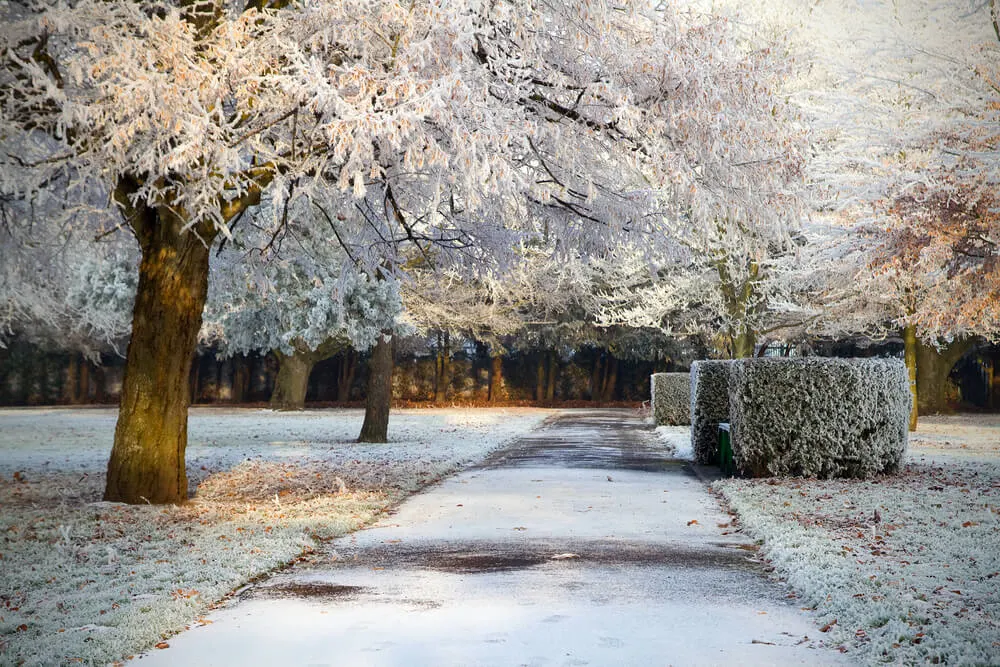
Most years the weather in February still feels very much like winter and there is some occasional snowfall. Don’t be fooled by the first spring flowers that often appear sprouting above ground level around February 1st, St. Bridget’s Day, (the traditional start of spring), it can be quite chilly so it is best to use layers when wrapping up to keep warm and dry.
The days are short with beautiful (early) sunsets visible from western Ireland. Regardless of the time of year, the rugged Irish scenery along the Wild Atlantic Way is always breathtaking.
February is a good time to plan a city destination break to Galway, Dublin or Belfast. There is plenty to do and see indoors to keep you busy!
While it is not the best time to travel to Ireland, the one main advantage to visiting Ireland at this time of year is that February is still considered off-peak season. If you are willing to shop around and are flexible with your travel dates, you might save on tours. Around St. Valentine’s Day, you might get some special deals on the hotels Ireland has to offer.
Weather in Ireland in February
Average temperatures in Ireland in February generally stay above freezing point, with extended periods of cold occuring seldomly. Storms blow in from the wild Atlantic from time to time and generally last 24-36 hours. Be prepared for the likelihood of some rain during your stay.
During this month, you can expect high wind speeds in exposed areas, particularly along the coast of western Ireland. Take care for gusts of wind if you are visiting cliffs or shorelines along the Wild Atlantic Way. Wave watching during windy weather can be an awe inspiring sight, just don’t get too close!
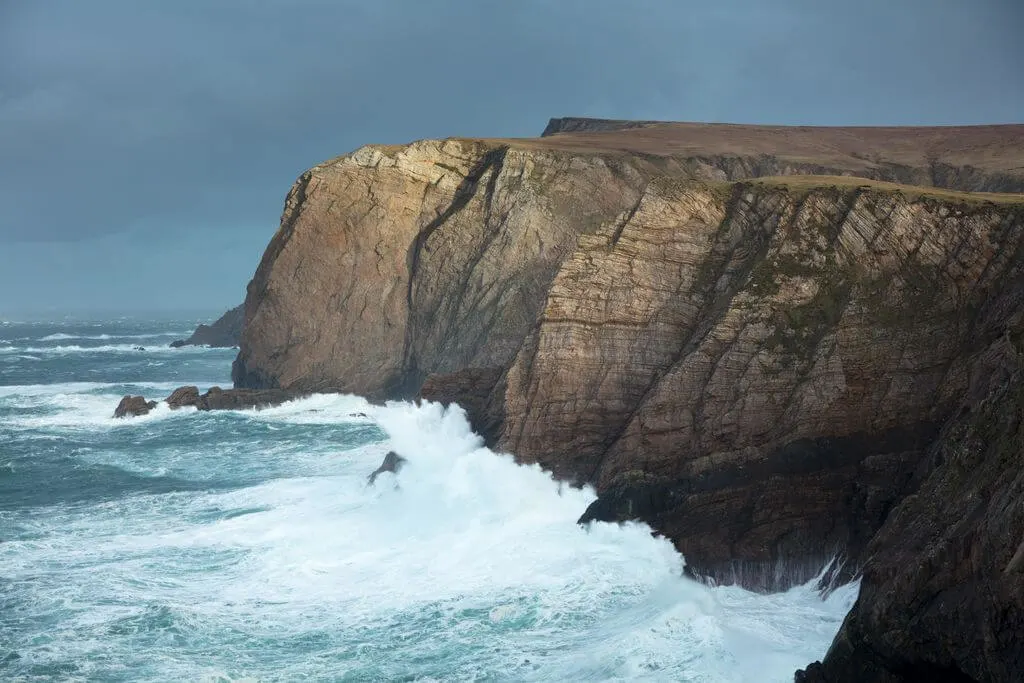
Don’t let the poorer weather conditions put you off getting a car rental. Just keep in mind that sometimes the wet or icy road conditions, especially on rural roads, can make the driving experience a bit more challenging.
In Ireland, hotels can offer occasional good mid-week breaks at this time of year so check around to get the best value hotel deals for your travel in Ireland. This is especially the case outside the bigger tourist destination spots.
| Dublin | Cork | Galway | Belfast | |
| Average temperature Feb. | 5 °C 41 °F | 6 °C 43 °F | 6 °C 43 °F | 4 °C 39 °F |
| Min. & max. temperature Feb. | 2-8 °C 36-46 °F | 3-8 °C 37-46 °F | 3-9 °C 37-48 °F | 2-7 °C 36-45 °F |
| Approx. rainfall Feb. | 48 mm 2″ | 98 mm 4″ | 76 mm 3″ | 67 mm 3″ |
| No. of wet days Feb. (>1.0 mm or 0.04″ precipitation) | 10 | 13 | 12 | 17 |
| Sunrise & sunset Feb. 1st | 8.10 a.m. 5.07 p.m. | 8.14 a.m. 5.21 p.m. | 8.21 a.m. 5.18 p.m. | 8.13 a.m. 5.01 p.m. |
Weather in Dublin Ireland in February
If you are planning a trip to Ireland and want to spend time in Dublin in February, the weather conditions shouldn’t bother your plans too much, as there is so much to see indoors within the city itself. With an average temperature of about 5 °C (41 °F), you will not have to worry about very low temperatures once you wrap up with layers.
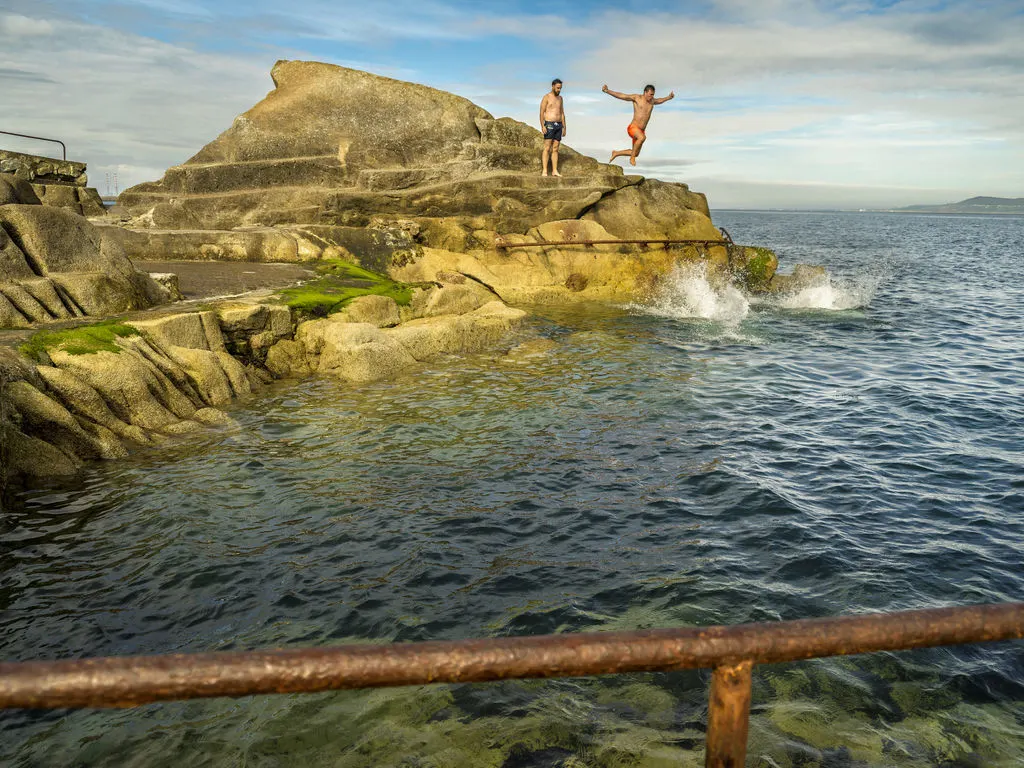
For those of you who might fancy a swim in the famous “Forty Foot”, brace yourself for the cold with the average water temperature being 6 °C (43 °F).
On days where the weather forecast is good, longer day trips either by bus or private car rental, are likely to be well-worth the effort. Suggested day tours are to the Giant’s Causeway in Northern Ireland or the Cliffs of Moher on the Wild Atlantic Way.
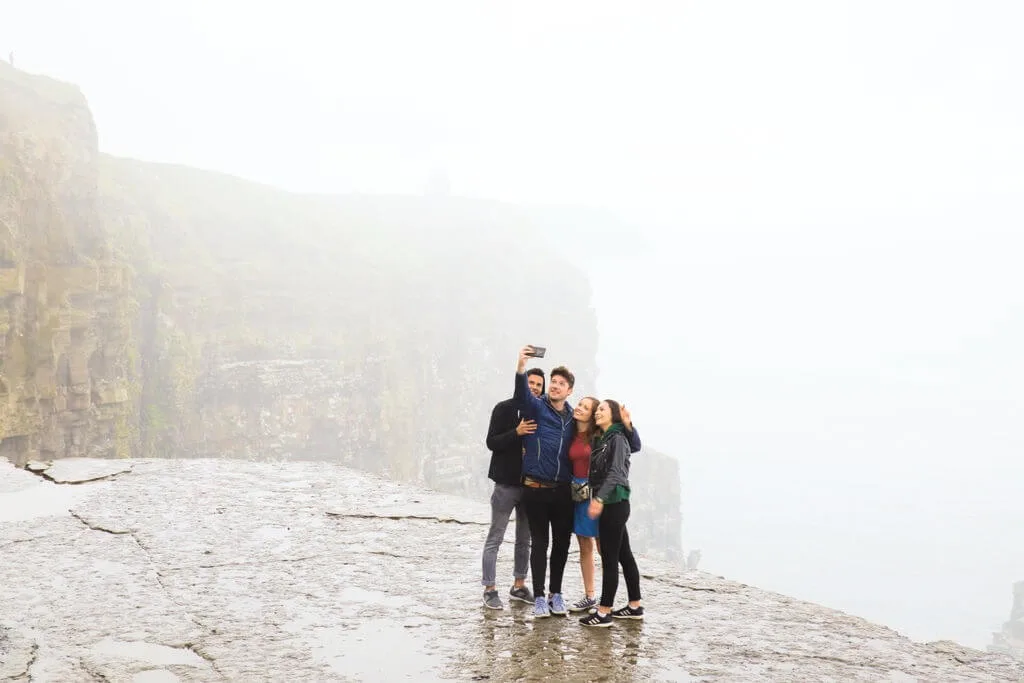
Ireland in March
Early spring is a good time to plan a vacation in Ireland, so March is definitely worth considering. The slight drawback is that during March weather in Ireland can be unpredictable. Weather in early March still feels more wintery, while the feeling of spring slowly creeps in towards the latter half of the month when the days start to get longer and warmer.
The tourist season starts to kick off again during this month and the St. Patrick’s Day celebrations around the saint’s day on March 17th generate a great buzz nationwide. Generally, you see people wrapped up with hats and scarves while they are waiting around outside for any length of time for the parades.
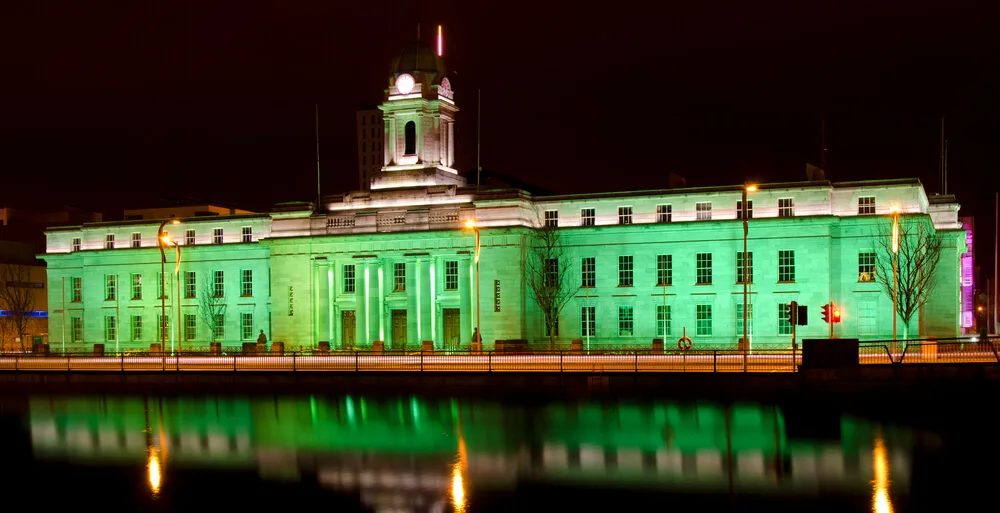
Weather in Ireland in March
The weather in the month of March can be lovely and mild, but also can leave a lot to be desired. Throughout Ireland and Northern Ireland the tourist season is slowly getting started again and the average temperatures are by now starting to warm up slightly to about 7 °C (45 °F). The lowest average temperature around this time is about 3 °C. Make sure to still pack your hats and scarves, as the wind can be quite cold this time of year.
Spring has arrived and with it the spring flowers in the parks, on roundabouts and along the Wild Atlantic Way. The days are noticeably getting longer with more hours of daylight (Note: The clocks “spring forward” one hour on the 3rd Sunday in March for Summer daylight savings time). This makes travel and sightseeing a lot easier and more enjoyable.
Bonus Tip: Make sure to bring some extra layers (including socks!) if you want to attend a St. Patrick’s Day parade. Standing around in the cold for an hour or two can be a chilling experience so check the weather forecast before you head out!
| Dublin | Cork | Galway | Belfast | |
| Average temperature March | 6 °C 43 °F | 7 °C 45 °F | 8 °C 46 °F | 6 °C 43 °F |
| Min. & max. temperature March | 3-10 °C 37-50 °F | 4-10 °C 39-50 °F | 5-11 °C 41-52 °F | 3-9 °C 37-48 °F |
| Approx. rainfall March | 52 mm 2″ | 98 mm 4″ | 79 mm 3″ | 67 mm 3″ |
| No. of wet days March (>1.0 mm or 0.04″ precipitation) | 11 | 14 | 14 | 16 |
| Sunrise & sunset March 1st | 7.11 a.m. 6.03 p.m. | 7.18 a.m. 6.14 p.m. | 7.22 a.m. 6.15 p.m. | 7.12 a.m. 6.00 p.m. |
Weather in Dublin Ireland in March
Dublin can experience reasonably mild average temperatures at this time of year, but the weather can be a bit mixed so be prepared for blustery, rainy or even some sunshine! You can never know in advance and need to be prepared for every kind of weather during this month!
On March 17th, Dublin hosts the biggest parade in the country as part of the St. Patrick’s Day Festival celebrations and many people use this as a wonderful reason to visit the capital and travel around Ireland. Enjoy the few days of festivities and book your hotels in advance if you plan your trip to coincide with the celebrations.
Ireland in April
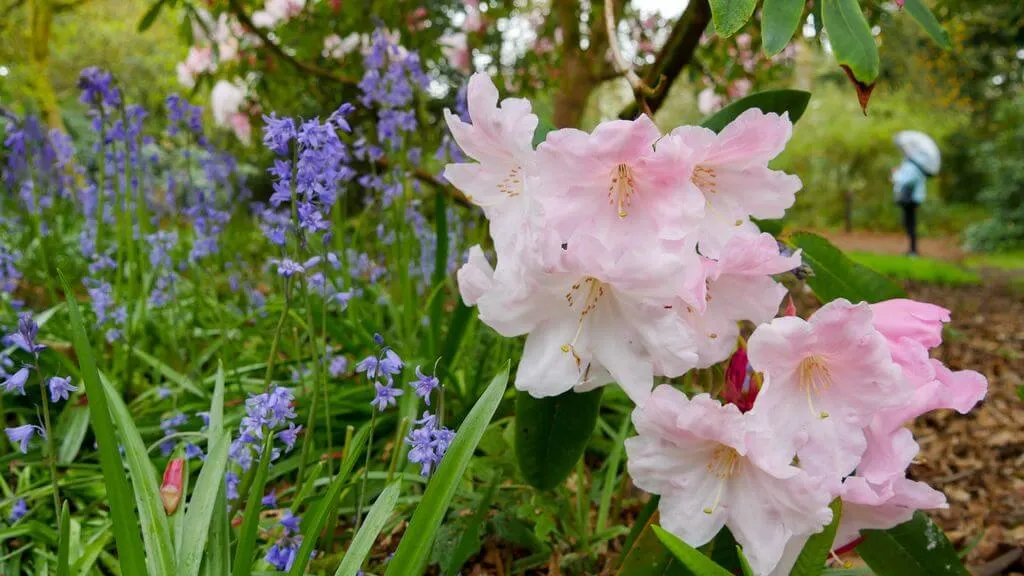
Visiting Ireland in April is an ideal time to visit and explore the country. Spring is in the air, the days are longer and the temperatures are increasing. April showers may be frequent, but with the right gear it is one of the best times to be outside and enjoy nature and stunning landscapes, particularly along the Wind Atlantic Way coastal drive.
The Easter break, which usually falls during this month, results in many family vacations being taken within Ireland. Increased demand, combined with better weather conditions means increased opening hours for certain attractions and additional services are scheduled (for example sailings to the Aran Islands and tours to see Fungie the famous Dingle dolphin in County Kerry)
Family friendly rentals can get booked up quickly, so be sure to plan your accommodation in advance over the Easter period.
Weather in Ireland in April
Generally speaking, Irish weather tends to improve over the duration of the month of April. The month often starts out wild and windy, but is more settled by the time May arrives with the average temperature around about 8 °C (46 °F).
Another benefit of visiting Ireland in April is that the April average for rainfall tends to be one of the lowest of all the months of the year. The waterproof clothes will still come in handy though and will also help to keep you warm against the wind chill!
As daylight hours extend to at least 8.00 p.m., there are also more opportunities during the days to travel and take part in outdoor activities in the seasonal spring weather.
| Dublin | Cork | Galway | Belfast | |
| Average temperature April | 8 °C 46 °F | 8 °C 46 °F | 10 °C 50 °F | 8 °C 46 °F |
| Min. & max. temperature April | 4-12 °C 39-54 °F | 5-12 °C 41-54 °F | 6-13 °C 43-55 °F | 3-12 °C 37-54 °F |
| Approx. rainfall April | 54 mm 2″ | 77 mm 3″ | 65 mm 3″ | 62 mm 2″ |
| No. of wet days April (>1.0 mm or 0.04″ precipitation) | 10 | 11 | 11 | 16 |
| Sunrise & sunset April 1st | 6.57 a.m. 8.01 p.m. | 7.08 a.m. 8.08 p.m. | 7.08 a.m. 8.12 p.m. | 6.54 a.m. 8.01 p.m. |
Weather in Dublin Ireland in April
Dublin city is a charming place to be in April, as the spring flowers and cherry blossoms brighten up the cities many parks and cafés open up their outdoor seating for food and drink. The average temperature is about 8 °C (46 °F), with the average low temperature usually not dipping below about 4 °C (39 °F). Layering is still the key to the most appropriate clothing, but you can leave your heavy winter woolies probably at home.
While you should still expect some rainfall on some days, most of it is likely to be confined to showers during this month. Showers can appear out of nowhere so always have an umbrella handy!
Take some time if you can to travel around the city and explore what is on offer. It is one of my favorite times of the year to holiday, not only in Dublin, but also around the rest of Ireland and Northern Ireland.
Ireland in May
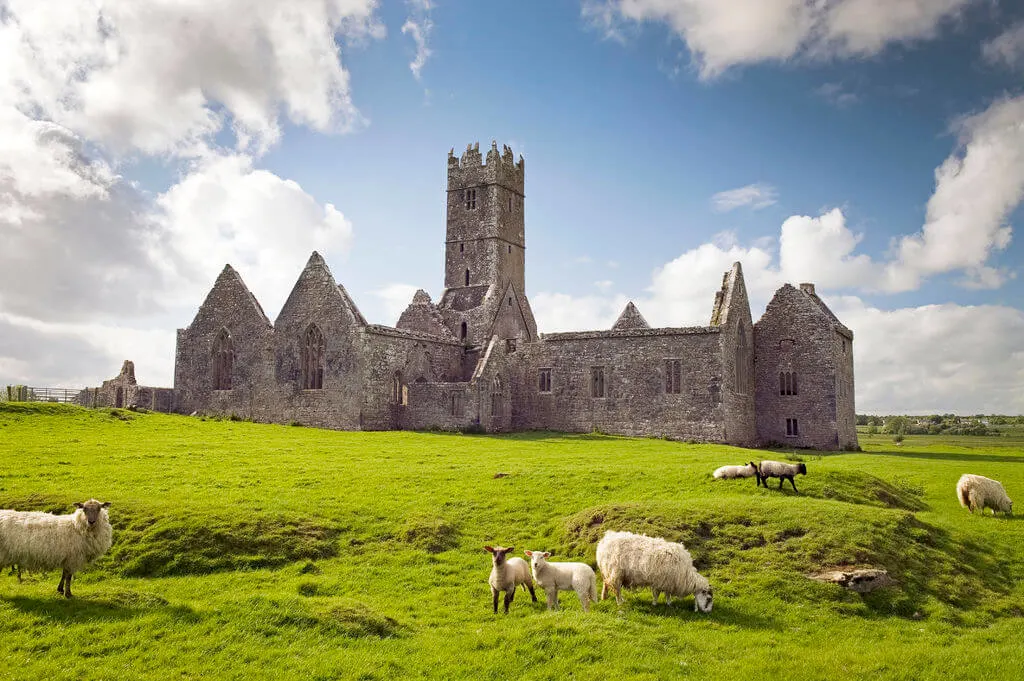
May is probably one of the best months of the year in Ireland. You can expect plenty of daylight and have a reasonable chance of decent weather. In fact, May and June are on average the sunniest months. As the temperature in Ireland in May is a bit warmer, you won’t need to wear as many layers of clothing.
Kids are still in school until around the end of June and the peak summer season does not start until mid-June so you are not likely to experience the large crowds at attractions that are more typical of the summer season.
Although visiting Ireland in May is not during the peak season, the costs of air travel and accommodation are somewhat similar to what you will find in high season.
Do you want to visit a unique festival in Ireland in May? Why not take part in the May the 4th Be With You Festival along the Wild Atlantic Way?! Particularly Star Wars fans will have a blast. Do you want to find out more about Ireland Star Wars locations? You can find all the information you need here.
Weather in Ireland in May
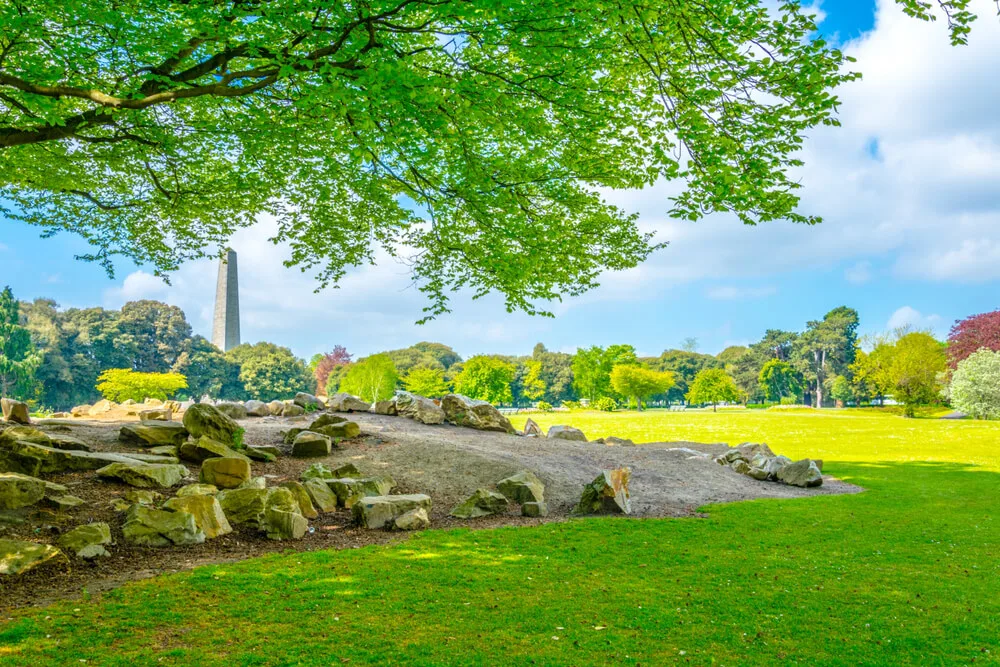
If you are planning to visit Ireland in May, then you are in with a chance of seeing Ireland at its best. The cool average temperatures ranging from about 7-15 °C (45-59 °F) are not likely to be too warm or too cold for most tastes. Generally speaking, you can experience settled weather and if you are lucky, some decent amounts of sunshine and perhaps even blue skies!
During the late spring season, precipitation levels are not particularly high and showers are more typical of this time of year than days of constant rainfall. Wind is less likely to be an issue than in the winter and early spring months. You can pack some lighter layers if you plan to travel to Ireland during this month.
Many travel guides highlight the summer months of June, July and August for their weather in Ireland, but if weather is your only consideration, May can be an alternative and slightly cheaper option to visit Ireland.
| Dublin | Cork | Galway | Belfast | |
| Average temperature May | 10 °C 50 °F | 11 °C 52 °F | 12 °C 54 °F | 11 °C 52 °F |
| Min. & max. temperature May | 6-14 °C 43-57 °F | 7-14 °C 41-57 °F | 8-16 °C 46-61 °F | 6-15 °C 43-59 °F |
| Approx. rainfall May | 60 mm 2″ | 82 mm 3″ | 65 mm 3″ | 64 mm 3″ |
| No. of wet days May (>1.0 mm or 0.04″ precipitation) | 11 | 12 | 13 | 15 |
| Sunrise & sunset May 1st | 6.50 a.m. 8.55 p.m. | 6.03 a.m. 8.58 p.m. | 6.01 a.m. 9.06 p.m. | 6.44 a.m. 8.58 p.m. |
Weather in Dublin Ireland in May
The weather in Dublin during the month of May can be very pleasant. The average temperature of 10 °C (50 °F) makes it perfect for exploring the city while escaping the hot summer or cold winter weather.
Visitors to the city can hope for not too much rain (usually) and generally a few days of settled weather during this month, as well as plenty of hours of daylight.
May is the time of year that I recommend people to visit Dublin and the rest of Ireland. You can enjoy Dublin’s parks with sunshine and avoid the crowds more typical of the high summer season.
Ireland in June
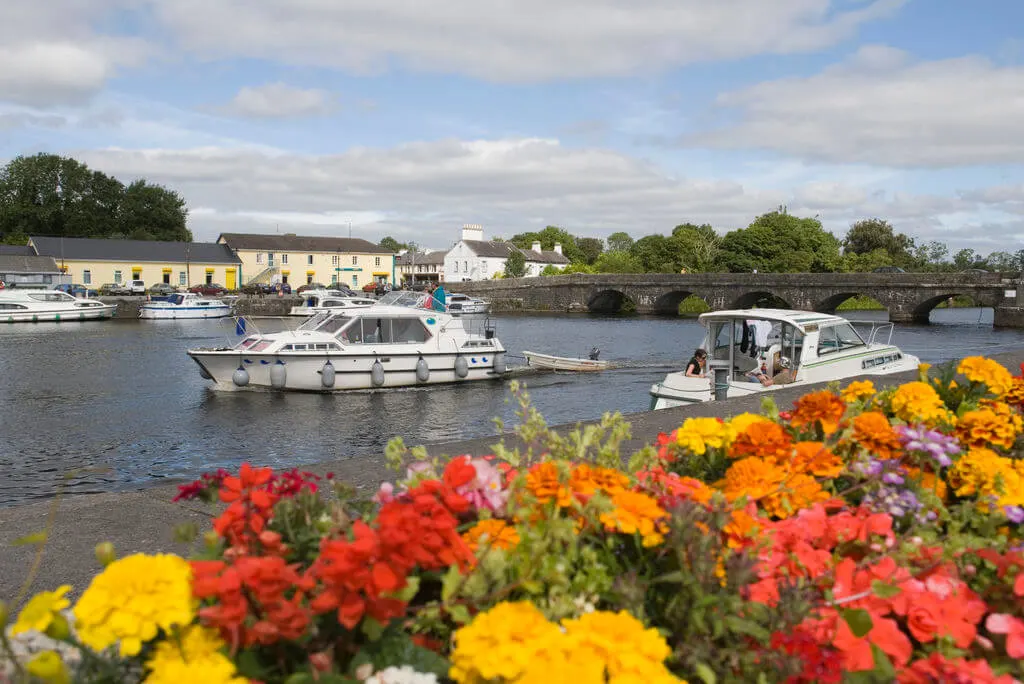
The very long summer evenings with dusk extending to about 10.00 p.m. or even later are definitely one of the main highlights of visiting Ireland and Northern Ireland in June. It is an ideal time to plan a road trip by car, motorhome or motorcycle around the Emerald Isle.
Temperatures at this time of year are now warmer, reaching about 14 °C (57 °F) on average and there is less likelihood of rain and windy weather.
From about mid-June, the high tourist summer season starts with crowds increasing over the next two months.
Summer is a great time to travel to Ireland with Irish people organising festivals and events of all kinds throughout the country. Some of the most enjoyable music festivals are held in June, such as the Sea Sessions (the surf music festival takes place in Bundoran, County Donegal) and the alternative Body and Soul Music and Arts Festival in County Westmeath.
Weather in Ireland in June
June heralds the start of the high summer season in Ireland along with the warmer average temperatures of 10-18 °C (50-64 °F). Rainfall in June is a reality in Ireland and unlikely to be completely avoided during your trip. Once you keep this in mind and are well prepared, rain is not going to hinder your Ireland travel plans too much.
The long hours of daylight in June is one the distinct advantages of visiting Ireland during this month. As most travel guides suggest, road trips and outdoor activity holidays are definitely better suited to this time of year for these reasons.
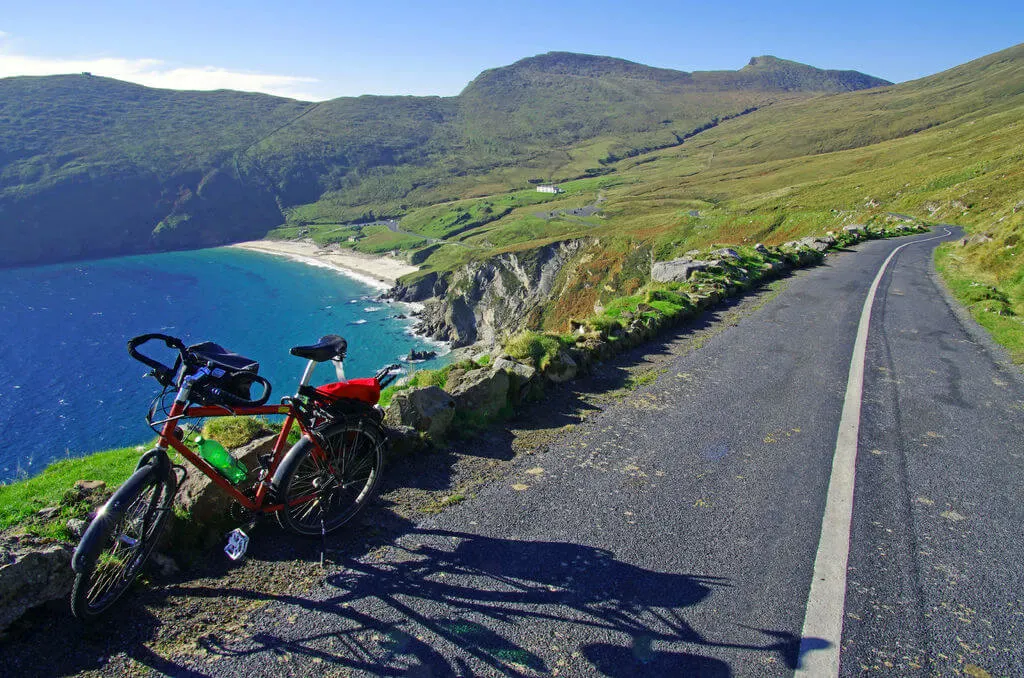
Outdoor food and music festivals are also more frequent during the summer months and bring the cities of Dublin, Galway and Cork to life with plenty of leafy beer gardens to enjoy a relaxing drink well into the long evenings.
| Dublin | Cork | Galway | Belfast | |
| Average temperature June | 14 °C 57 °F | 14 °C 57 °F | 15 °C 59 °F | 13 °C 55 °F |
| Min. & max. temperature June | 10-18 °C 50-64 °F | 10-17°C 50-63 °F | 11-18 °C 52-64 °F | 9-17 °C 48-63 °F |
| Approx. rainfall June | 67 mm 3″ | 81 mm 3″ | 70 mm 3″ | 69 mm 3″ |
| No. of wet days June (>1.0 mm or 0.04″ precipitation) | 10 | 10 | 11 | 16 |
| Sunrise & sunset June 1st | 5.03 a.m. 9.43 p.m. | 5.20 a.m. 9.44 p.m. | 5.14 a.m. 9.54 p.m. | 4.64 a.m. 9.49 p.m. |
Weather in Dublin Ireland in June
June is an exciting month to visit Ireland and especially Dublin city, as the James Joyce Bloomsday festivities take over on June 16th. The pleasant monthly average temperature of about 14 °C (57 °F) in Dublin, ensures that it is not too chilly to take part in the outdoor Bloomsday festivities (many take place indoors as well!).
As the high tourist season starts in June, there will be more visitors around the capital. On days where the weather is good, many people flock to the lovely parks scattered around the city to relax, soak up the atmosphere and enjoy the warmer summer temperatures.
There are more than enough indoor attractions (many of them free) to keep you entertained if the weather forecast for a day is rainy or windy.
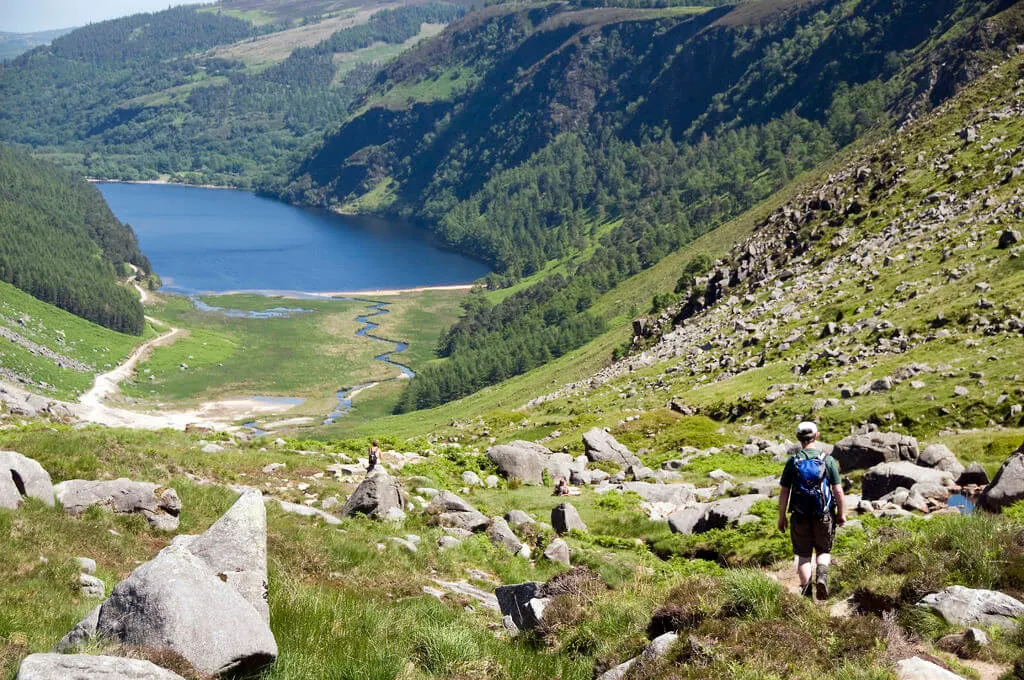
If you plan a day trip from Dublin to Glendalough, the Cliff of Moher and the Burren or to Northern Ireland, you are more likely to benefit more from the trip at this time of the year than during winter or spring when the daylight hours are shorter.
Ireland in July
July in Ireland is a popular time to visit Ireland with long daylight hours and generally decent weather. Schools are closed for summer holidays, meaning that there are more domestic tourists, as well as overseas visitors during this peak season period. Keep this in mind when planning your budget, accommodation and what top attractions to visit.
It is a great time to check out a national park or two, with Connemara National Park being one of my personal favorites. There is a small visitor information center in Letterfrack where you can find highly enjoyable hiking trail options for the nearby Diamond Hill.
While in the general vicinity, two other tips you should consider are to a night in the luxurious Ballynahinch Castle Hotel and check out the Galway International Arts Festival if you have the chance.
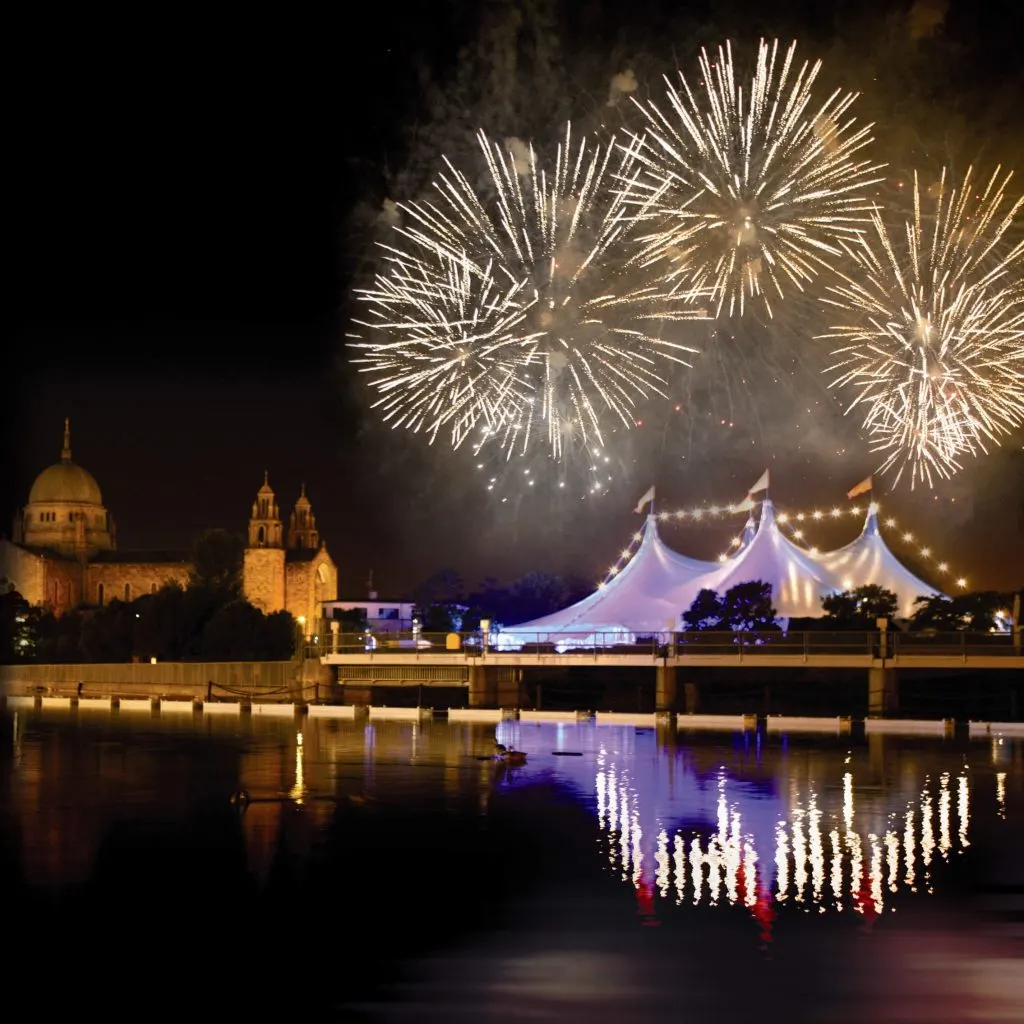
Weather in Ireland in July
Generally speaking, typical Irish weather for the month of July is reasonably warm with average temperatures between 12-20 °C (54-68 °F) and a similar number of rainfall days to the neighboring months of June and August. The long daylight hours that extend well into the late evening are a great bonus at this time of the year.
Road trips around Ireland and Northern Ireland are best suited to the long summer days, with July being a perfect time to plan such a trip. The weather forecast can still be quite changeable, so always take a look a few days in advance if you want to travel to a particular (outdoor) location on a particular day.
It might be a bit unrealistic to expect bright, blue skies and sunshine every day, but with any luck, the weather will be reasonably dry and will allow you to fit in lots of sightseeing.
In July average temperatures at night usually don’t dip too low, so this is also one of the best times to go camping. Alternatively if you plan on staying in hotel or bed and breakfast accommodation, book your stays in advance, as there may not be vacancies in high season as short notice.
| Dublin | Cork | Galway | Belfast | |
| Average temperature July | 16 °C 61 °F | 15 °C 59 °F | 16 °C 61 °F | 15 °C 59 °F |
| Min. & max. temperature July | 12-20 °C 54-68 °F | 12-19 °C 54-66 °F | 13-20 °C 55-68 °F | 11-19 °C 52-66 °F |
| Approx. rainfall July | 56 mm 2″ | 79 mm 3″ | 66 mm 2″ | 77 mm 3″ |
| No. of wet days July (>1.0 mm or 0.04″ precipitation) | 10 | 10 | 10 | 19 |
| Sunrise & sunset July 1st | 5.01 a.m. 9.55 p.m. | 5.19 a.m. 9.56 p.m. | 5.13 a.m. 10.06 p.m. | 4.52 a.m. 10.02 p.m. |
Weather in Dublin Ireland in July
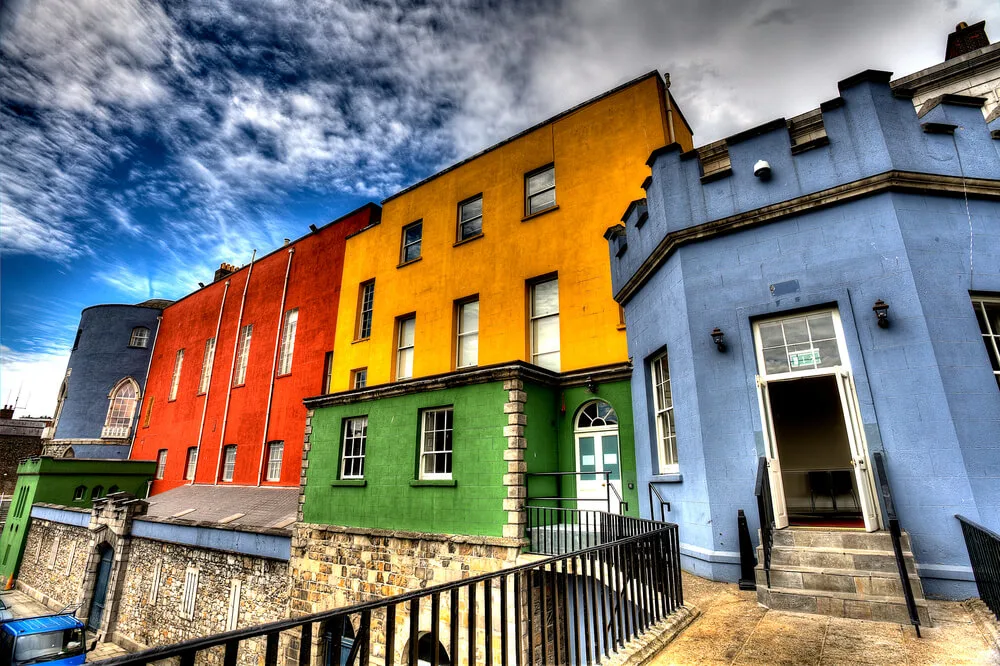
In July average temperatures are about 12-20 °C (54-68 °F) in Dublin city. You could expect to have rainfall on about 10 days, but this of course is just an average and each year can be different. As with every month in Ireland, bring layers and waterproof clothing to make sure that you are covered for all eventualities!
July is a popular time to visit Dublin, especially for visitors from the United States. The reasonably good weather, long summer days and wide variety of events and festivals make it a great time to visit Ireland’s capital city.
Hotels can be booked out well in advance, so book early to have the best selection.
Ireland in August
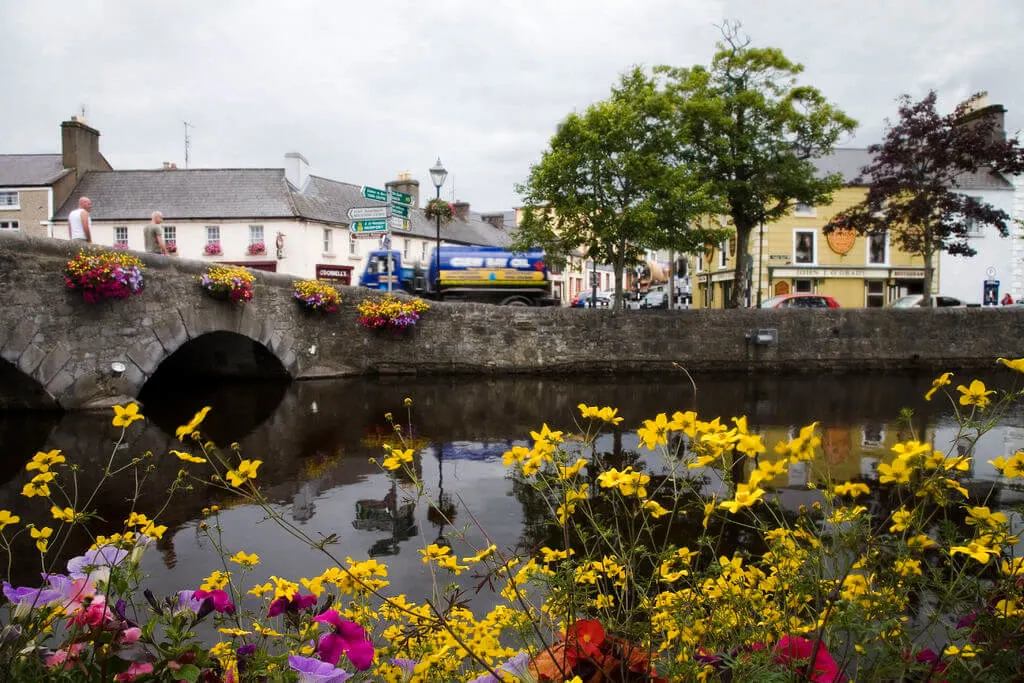
August tends to be the month in which most tourists arrive for their Ireland holidays. Visiting Ireland in August is a very pleasant time, with many different festivals, events and plenty of lively pub evenings with traditional music.
Towards the end of August, the nights start to feel a bit chillier and the long stretch in the evenings is noticeably shorter than the previous two months.
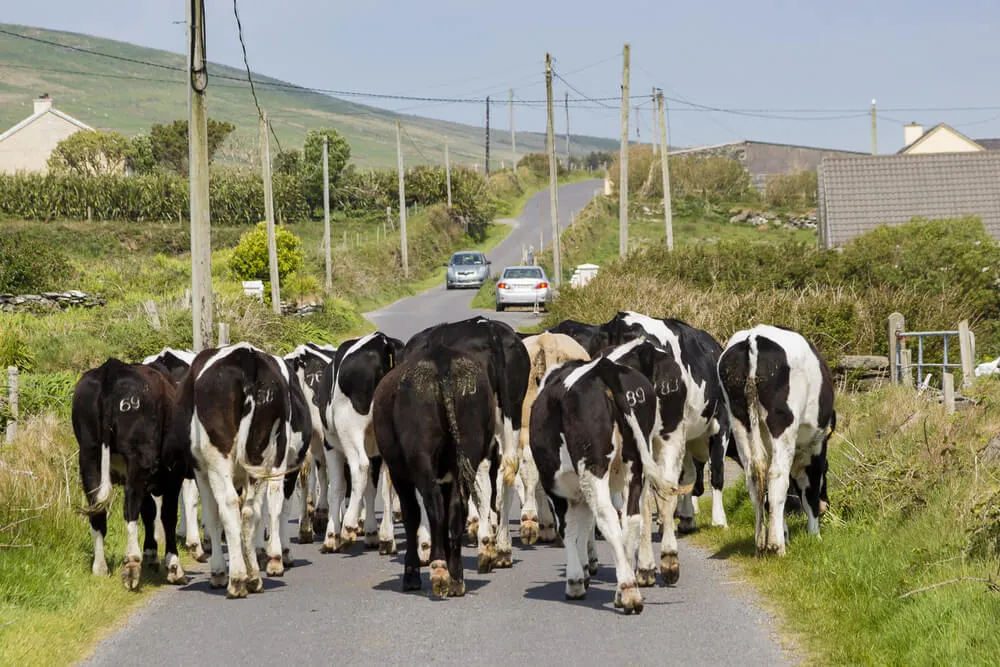
Peak tourist season results in increased traffic with many large and small group tour busses navigating the narrow, rural roads. The countryside roads often have view restrictions due to bends, hedges, farm machinery or occasionally farm animals. It is worth keeping this in mind when you are considering what type of vehicle to rent. Don’t forget that in Ireland you have to drive on the left.
Weather in Ireland in August
August is high season in Ireland and the warmer temperatures combined with long days attract lots of visitors worldwide. The average temperatures are between about 12-20 °C (54-68 °F) and by now the water temperature is also starting to rise (14-16 °C or 57-61 °F). Perfect for a refreshing dip in the sea!
The average rainfall increases a bit for the month of August in comparison to July, but this fluctuates each year.
The summer is a great time to travel along the Wild Atlantic Way or the Causeway Coastal Route in Northern Ireland. The popular stops along the routes tend to get busy at peak times of the day, regardless of the weather.
While the evenings do start to get noticeably shorter and cooler towards the end of August, there is still daylight well into the evening allowing you to maximise your Irish holiday.
| Dublin | Cork | Galway | Belfast | |
| Average temperature Aug. | 15 °C 59 °F | 15 °C 59 °F | 16 °C 61 °F | 15 °C 59 °F |
| Min. & max. temperature Aug. | 11-19 °C 52-66 °F | 12-19 °C 54-66 °F | 13-20 °C 55-68 °F | 11-19 °C 52-66 °F |
| Approx. rainfall Aug. | 73 mm 3″ | 97 mm 4″ | 82 mm 3″ | 94 mm 4″ |
| No. of wet days Aug. (>1.0 mm or 0.04″ precipitation) | 11 | 11 | 13 | 17 |
| Sunrise & sunset Aug. 1st | 5.42 a.m. 9.21 p.m. | 5.56 a.m. 9.22 p.m. | 5.53 a.m. 9.30 p.m. | 5.35 a.m. 9.23 p.m. |
Weather in Dublin Ireland in August

In Dublin, the weather in August tends to be pleasant. Average temperatures this month are about 11-19 °C (52-66 °F), which makes it an ideal time for a city break. Perhaps take a walking tour or just enjoy exploring the city without feeling too hot or cold, or hopefully wet!
On average, you can expect to encounter at least some rain on about 11 days during August, but this is just an estimate! You can never go wrong with layers and waterproofs when it comes to Irish weather, whatever time of the year.
Although Ireland is not particularly known for its sunshine, don’t forget to wear sunscreen when you are out and about on sunny days! For a pretty accurate weather forecast, you can check Yr.
Ireland in September
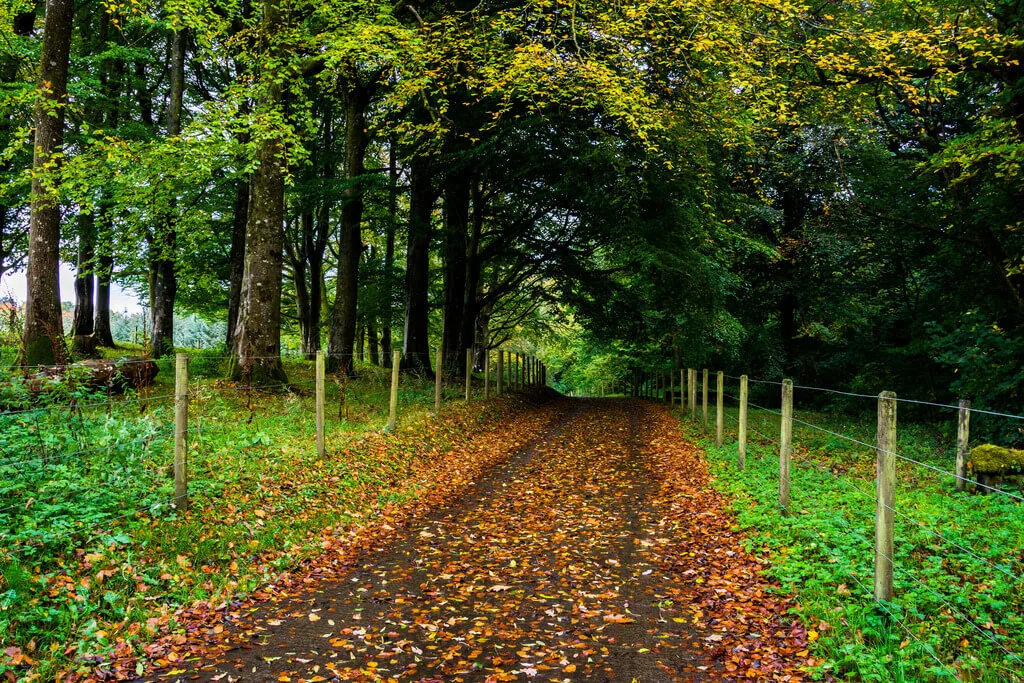
Visiting Ireland in September is an ideal vacation time. Fall has definitely started, but many of the benefits of the summer, such as warmer weather and longer evenings still linger to a degree. The evenings can be chilly, so make sure you bring some layers of clothing. There are fewer tourists, although it is still considered peak season.
Fall, or autumn as it is known in Ireland, is a great time to explore the landscape and take part in outdoor activities. Hiking in Ireland in September is particularly enjoyable with subtle changes in color visible on the landscape.
Key events to mark on your calendar for September the world renowned Lisdoonvarna Matchmaking Festival in County Clare and the 10-Day Waterford Harvest Food Festival.
Weather in Ireland in September
There is a noticeable change in the weather from August, but generally September can be a very agreeable month weatherwise. It is often not too hot or too cold, there are fewer tourists and the long daylight hours in the evening until about 8.00 p.m. means that you can get a lot out of the day.
The average temperature for September is about 13 °C (55 °F) and while the likelihood of rain (and wind) does increase slightly in comparison to the summer months, this time of the year can be a very enjoyable time for a trip to Ireland. Sea temperatures are also similar to August around max 16 °C (61 °F).
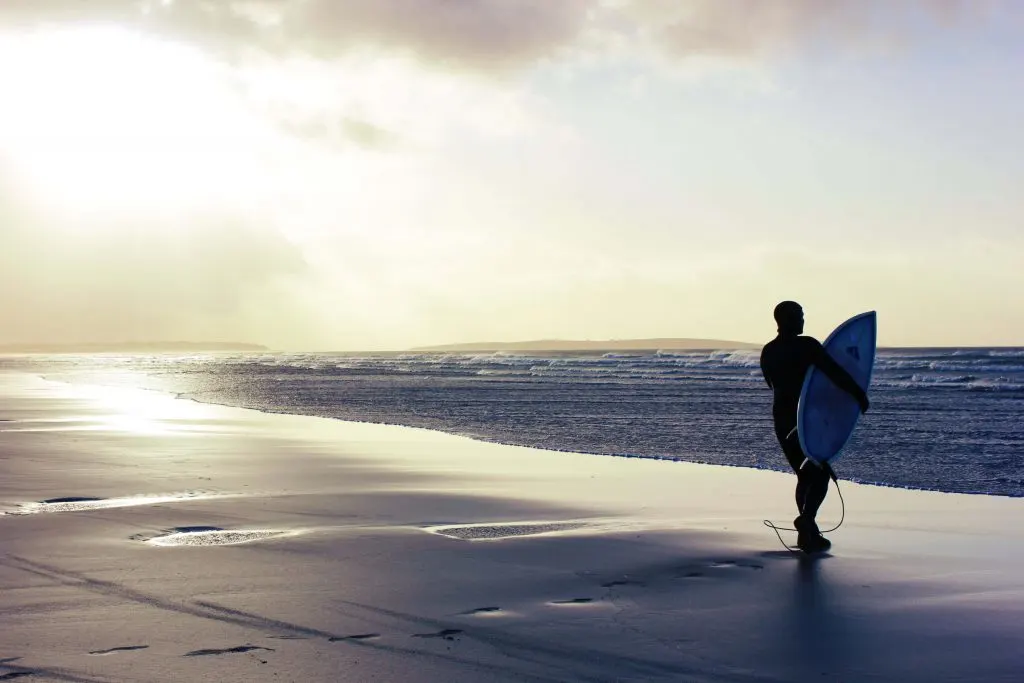
The leaves begin to change color and towards the end of the month you might encounter crisp autumnal days. The evening light around this time can be very beautiful. So watching an Irish western sunset along the Wild Atlantic way can be a memorable experience with the right conditions.
| Dublin | Cork | Galway | Belfast | |
| Average temperature Sept. | 13 °C 55 °F | 13 °C 55 °F | 14 °C 57 °F | 13 °C 55 °F |
| Min. & max. temperature Sept. | 10-17 °C 50-63 °F | 10-17 °C 50-63 °F | 11-18 °C 52-64 °F | 9-16 °C 48-61 °F |
| Approx. rainfall Sept. | 60 mm 2″ | 95 mm 4″ | 76 mm 3″ | 97 mm 4″ |
| No. of wet days Sept. (>1.0 mm or 0.04″ precipitation) | 10 | 11 | 13 | 18 |
| Sunrise & sunset Sept. 1st | 6.35 a.m. 8.13 p.m. | 6.46 a.m. 8.19 p.m. | 6.46 a.m. 8.24 p.m. | 6.31 a.m. 8.14 p.m. |
Weather in Dublin Ireland in September
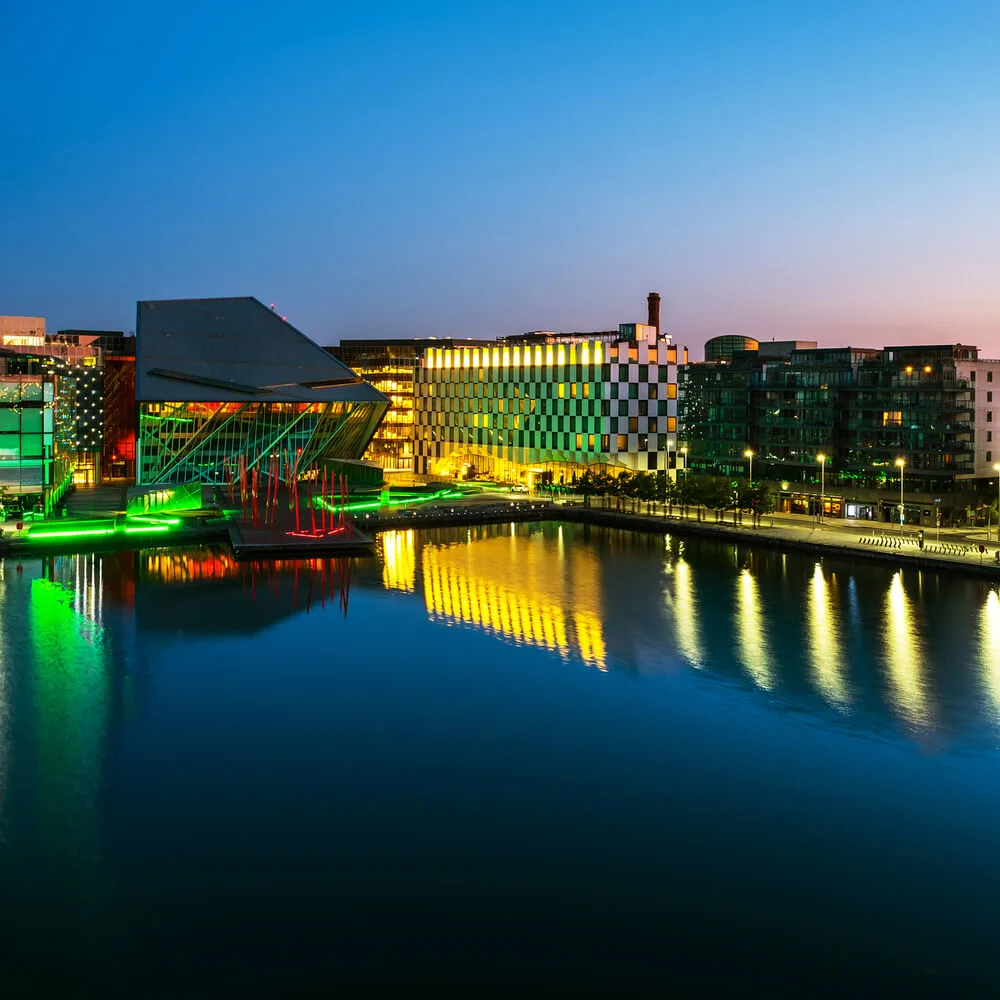
Dublin City is a lively tourist destination in September, as it is still a very popular time to visit and explore the city’s top sights including The Guinness Storehouse, Trinity College and Temple Bar (for itinerary ideas check out our 3-day itinerary for Dublin).
The average temperature is about 13 °C (55 °F), so as well as your layers, it might be necessary to bring a jacket for the evenings if you plan on being outside a lot.
Some amount of rain is to be expected this month, so pack your umbrella and check out some of the many great indoor attractions on the wet days.
Longer day trips to parts of the Wild Atlantic Way or other further away destinations in Ireland and Northern Ireland are still possible this month. I would be less keen to do such trips later in the year due to the more limited daylight levels, generally poorer weather and the amount of time spent traveling.
On the other hand… you can always strike it lucky with a tour on a fine, sunny day in October, November or even December!
Ireland in October
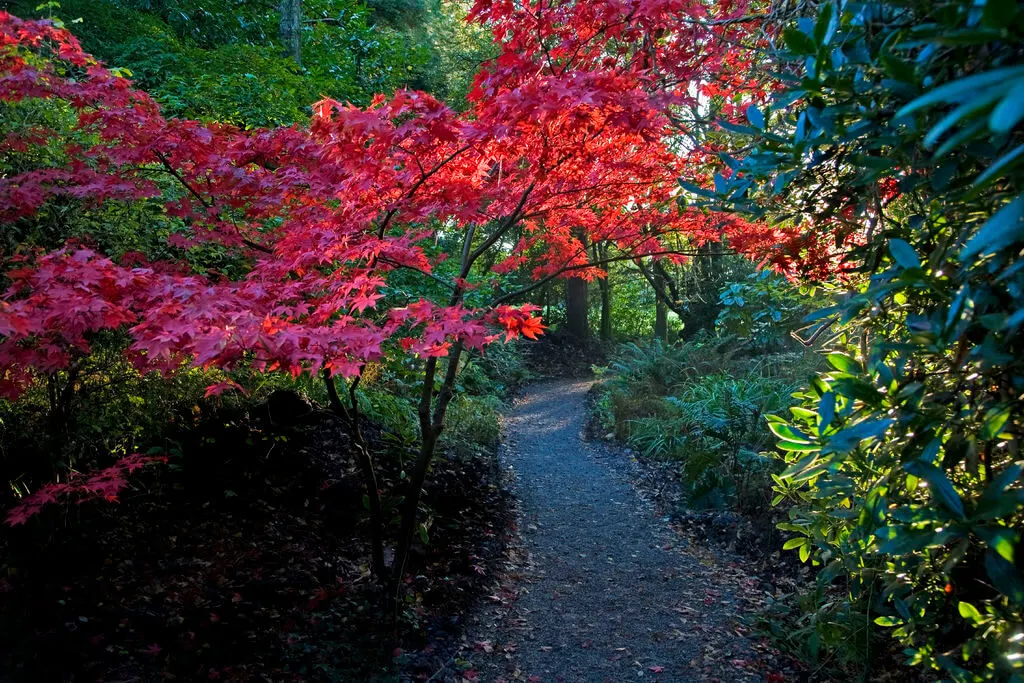
October is a nice time to travel to Ireland and is a good alternative for anyone planning a budget trip or wanting to avoid crowds. The weather can be more mixed, and you should pack warmer layers and a waterproof jacket is an absolute must. In the best case, you will encounter settled weather with crisp autumnal days, in the worst case, at least you will have a waterproof jacket!
Visiting Ireland in October is considered to be the “shoulder season”, which may mean you get better deals on hotels and car rental during your trip. There are still dozens of festivals taking place across the country, including the Dingle Food Festival.
Why not get in the mood for Halloween (an ancient Celtic festival of Samhain thought to originate in Ireland) and explore where Bram Stoker got his inspiration for Dracula in St. Michan’s Crypt among other weird things in Dublin? (Our post on unusual sites in Dublin covers it all!)

Weather in Ireland in October
Ireland around this time of year begins to experience a dip in the average temperatures with most days ranging between 7-14 °C (45-57 °F). Rainfall also increases around October, as do the number of days where you can expect rainfall.
Planning an Ireland travel trip during October can be a good idea, if you don’t mind the shorter daylight hours and more mixed weather forecast. On the plus side, you will encounter less queues and may get better deals than earlier in the season.
Travel tips: There is a public holiday (bank holiday) on the last Monday of October, when banks and other services will close. Winter time also starts on the last Sunday of the month, which means you technically gain an hour. However, it gets dark in the evenings around 5.00 p.m.
| Dublin | Cork | Galway | Belfast | |
| Average temperature Oct. | 11 °C 52 °F | 8 °C 46 °F | 11 °C 52 °F | 10 °C 50 °F |
| Min. & max. temperature Oct. | 7-14 °C 45-57 °F | 8-13 °C 46-55 °F | 8-14 °C 46-57 °F | 7-13 °C 45-55 °F |
| Approx. rainfall Oct. | 79 mm 3″ | 138 mm 5″ | 105 mm 4″ | 94 mm 4″ |
| No. of wet days Oct. (>1.0 mm or 0.04″ precipitation) | 11 | 15 | 15 | 19 |
| Sunrise & sunset Oct. 1st | 7.27 a.m. 7.00 p.m. | 7.35 a.m. 7.10 p.m. | 7.38 a.m. 7.11 p.m. | 7.26 a.m. 6.58 p.m. |
Weather in Dublin Ireland in October
With a slight chill in the air this time of year, October is the perfect time to start discovering the many great museums, galleries and other superb indoor attractions that Dublin has to offer.
With an average temperature of about 11° C, you should find sightseeing on such days quite manageable, once you wrap up a little. Some potential visitors to Ireland are discouraged by the thought of rainy, windy weather in October. However, it is worth noting that we do occasionally have really glorious sunny days, particularly towards the start of the month.
Sometimes the weather in October could be better than June or July. It all comes down to luck and being well prepared with the right clothes for the season!
Why not try an early morning walk on one of the crisp autumnal days and enjoy the colorful leaves along the Grand Canal or spend some time in one of the many parks? It can be a magical part of any holiday!
Ireland in November
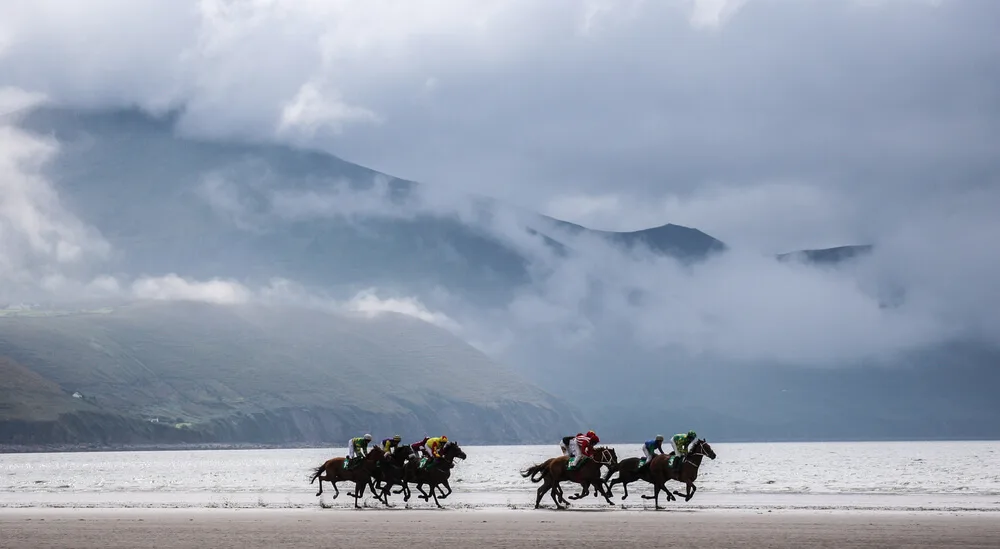
Generally speaking, the weather in November tends to be a bit wintery. It is certainly colder than the previous months and rainfall also increases. However, glorious cold calm days in November are also a possibility. It is best to prepare for all eventualities with multiple layers and waterproof clothes.
The main tourist attractions remain open throughout the year, but some of the smaller attractions may have restricted opening hours or may even close for the winter.
The thought of colder or wetter weather should not discourage visiting Ireland in November. There are multiple other great ways to spend your time indoors, such as great museums, shops, theaters, events and pubs that will make any Ireland family itinerary worthwhile.
Weather in Ireland in November
November in Ireland is chilly with average temperatures falling between about 4-10° C (39-50 °F). The days are reasonably short with long evenings, perfect to settle down beside a roaring fire perhaps with an Irish stew and a pint of Guinness to warm you up!
In terms of tourism, November is a quiet month. The colder, wetter and generally windier weather deters many tourists from planning a holiday at this time. However, those who are willing to travel are likely to experience better hotel and airfare deals on their trip and can even experience some of the early Christmas season events towards the end of the month.
Storm swells and crashing waves along the Wild Atlantic Way coastline can be absolutely mesmerizing at this time of year.
| Dublin | Cork | Galway | Belfast | |
| Average temperature Nov. | 7 °C 45 °F | 6 °C 43 °F | 8 °C 46 °F | 6 °C 43 °F |
| Min. & max. temperature Nov. | 5-10 °C 41-50 °F | 4-9 °C 39-48 °F | 6-11 °C 43-52 °F | 4-9 °C 39-48 °F |
| Approx. rainfall Nov. | 73 mm 3″ | 120 mm 5″ | 94 mm 4″ | 97 mm 4″ |
| No. of wet days Nov. (>1.0 mm or 0.04″ precipitation) | 11 | 14 | 15 | 19 |
| Sunrise & sunset Nov. 1st | 7.24 a.m. 4.52 p.m. | 7.29 a.m. 5.05 p.m. | 7.35 a.m. 5.03 p.m. | 7.26 a.m. 4.46 p.m. |
Weather in Dublin Ireland in November
The weather in November may not entice you to do too much exploring outside with average temperatures between 5-10 °C (41-50 °F). The low temperature, general wintery weather and greater rainfall makes this month ideal for indoor attractions, cosy cafés and lively pubs. Luckily Dublin is known for having all of these things!
Visiting Ireland in November for a few days can be great fun, especially later in the month when the Christmas festivities, markets, decorations and shopping really start. That is when the atmosphere in the city begins to take on a special seasonal buzz.
For an extra special trip and a way to spend the long evenings, why not try a luxury stay in a castle hotel, such as the 5-star Luttrellstown Castle Resort or the 4-star Clontarf Castle hotel (not far from Dublin Airport)?
Longer day trips from Dublin city at this time of year would only be advisable if the weather forecast is expected to be really good.
Ireland in December
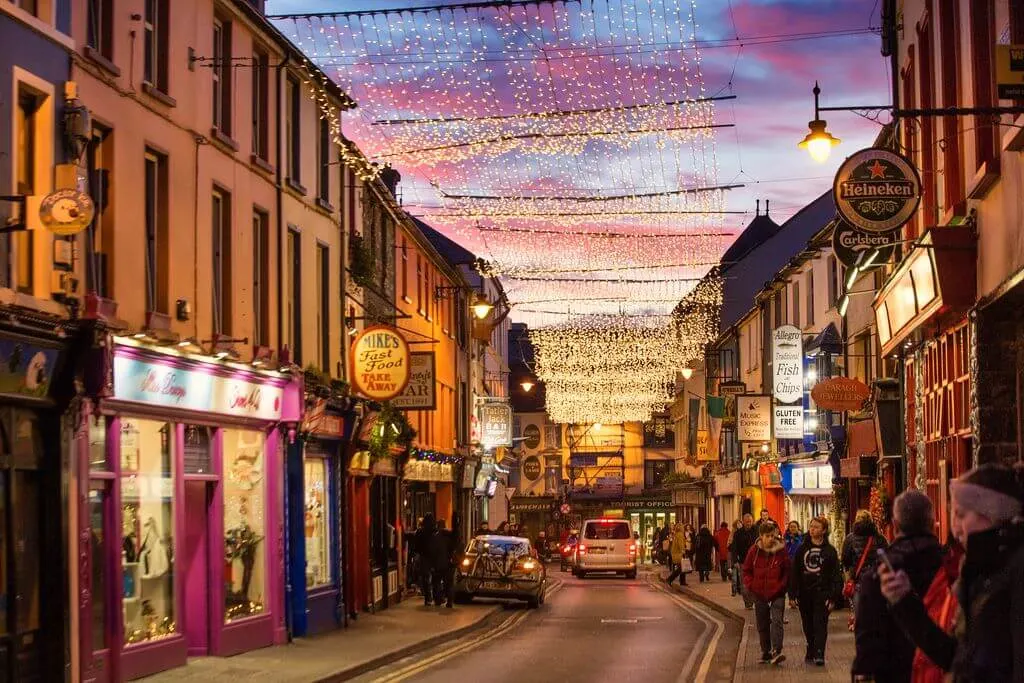
December in Ireland is perfect for anyone who enjoys the Christmas ambiance without the snow (usually!). While the average temperature in December is 6 °C (43 °F), it only occasionally snows and when it does, it usually doesn’t stay on the ground for too long.
Although Ireland in winter does not usually boast of the snowy winter wonderland of other European countries, that is not to say that the Christmas markets are any less festive and fun than anywhere else!
The Cliffs of Moher in December, as well as many other of the magnificent destinations along the Wild Atlantic Way, can be particularly haunting and memorable in December.
Weather in Ireland in December
How cold is Ireland in December? Ireland is chilly, but not extremely cold in December with an average temperature of about 6 °C (43 °F). There can be some cold spells that might bring some snow, but more often than not Ireland does not experience a white Christmas.
December is a month where you should expect plenty of cloud cover and the usual wintery rain and wind. The occasional winter storm will also blow through. If you strike it lucky with the weather you might see the northern lights! (Find out more about the northern lights in Ireland here.)
At this time of year, most people are so enchanted by Christmas, city light displays and festive markets that they are not too concerned with the weather forecast. If you encounter dry days, you can count yourself lucky. Otherwise just wrap up well and enjoy the atmosphere.
| Dublin | Cork | Galway | Belfast | |
| Average temperature Dec. | 6 °C 43 °F | 6 °C 43 °F | 6 °C 43 °F | 5 °C 41 °F |
| Min. & max. temperature Dec. | 3-8 °C 37-46 °F | 4-9 °C 39-48 °F | 4-9 °C 39-48 °F | 2-8 °C 36-46 °F |
| Approx. rainfall Dec. | 73 mm 3″ | 133 mm 5″ | 104 mm 4″ | 95 mm 4″ |
| No. of wet days Dec. (>1.0 mm or 0.04″ precipitation) | 12 | 15 | 16 | 21 |
| Sunrise & sunset Dec. 1st | 8.17 a.m. 4.10 p.m. | 8.19 a.m. 4.26 p.m. | 8.28 a.m. 4.21 p.m. | 8.23 a.m. 4.02 p.m. |
Weather in Dublin Ireland in December
In December the weather in Dublin is quite typical for Ireland in winter. You should expect a few wet days and need to wrap up, as the average temperatures are about 3-8 °C (37-46 °F). Overcast days with plenty of cloud cover are the norm, but sunny days exceptions do also occur from time to time.
Even if it is cold, wet and windy outside, it is still worth donning your layers and waterproof clothes and visiting the Christmas lights and the Christmas markets that Dublin city has to offer this month.
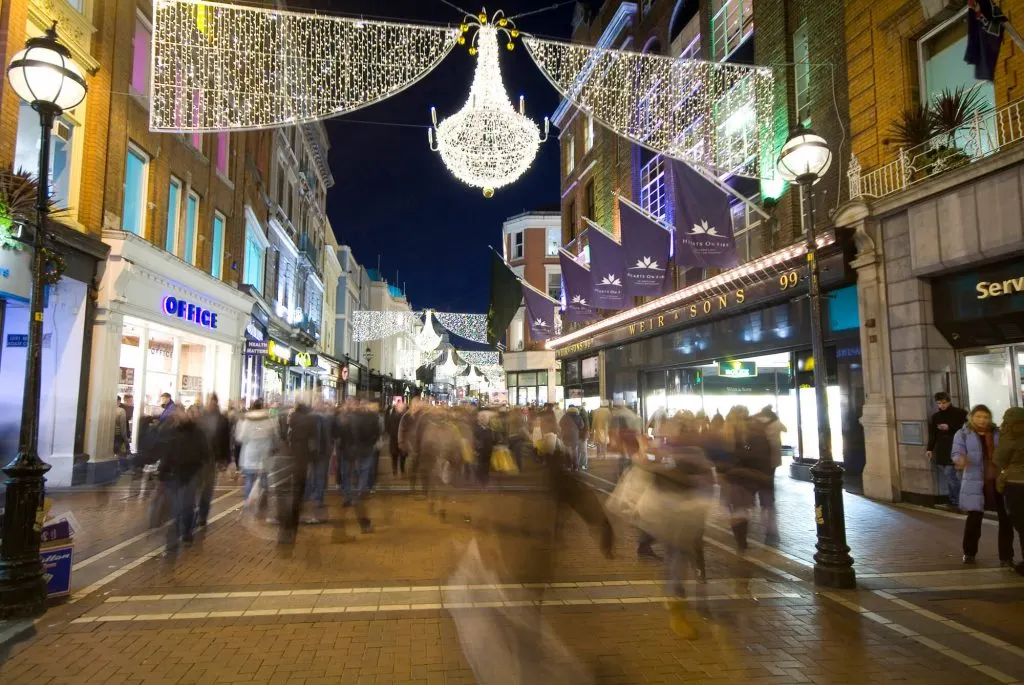
Christmas and New Year are popular times for tourists to travel to Ireland and also many expats living abroad try to make it home for the celebrations. This means that Dublin Airport and the nearby hotels can be very busy. If the weather forecast does take a turn for the worse, plan ahead and make sure that you are in plenty of time for your departure, as it can sometimes get a bit chaotic.
Our Day Trips from Cork and Best Things to do in Cobh might give you some ideas for your planning your itinerary and films buffs, check out our Harry Potter and Star Wars filming location posts.
